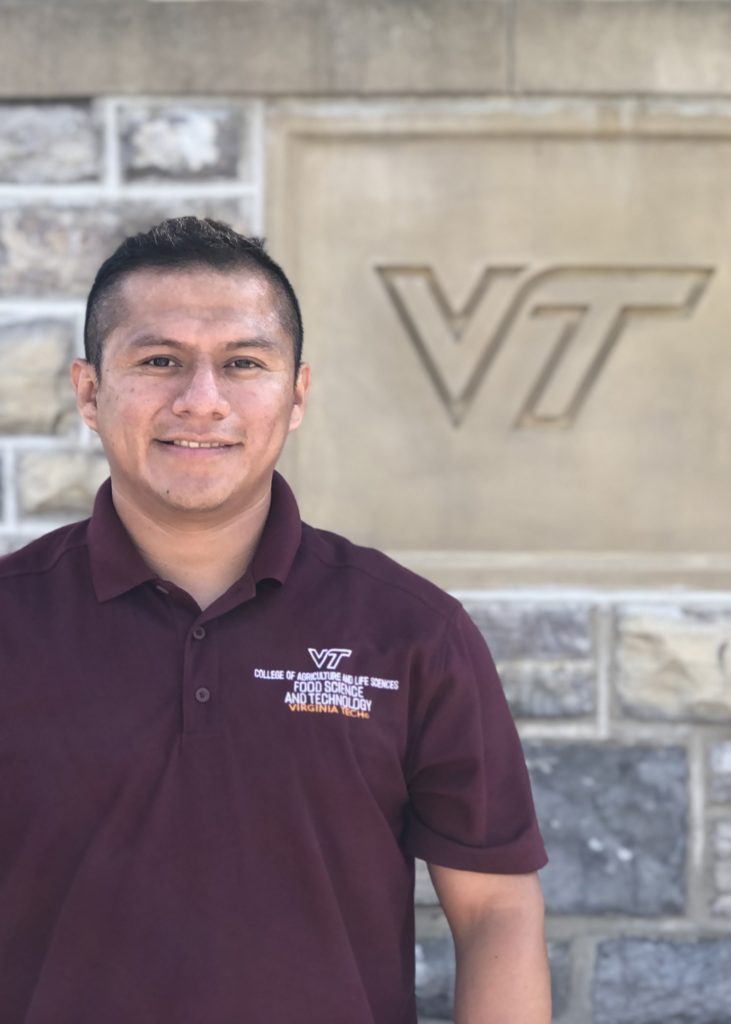At a Glance
- Population: 18 million (2021)
- Rural population: 46.15% (2018)
- Capital: Guatemala City
- Cacao production (MT): 1,392.93 (2017)
- Fine cacao export (MT): 161 (2017/2018)
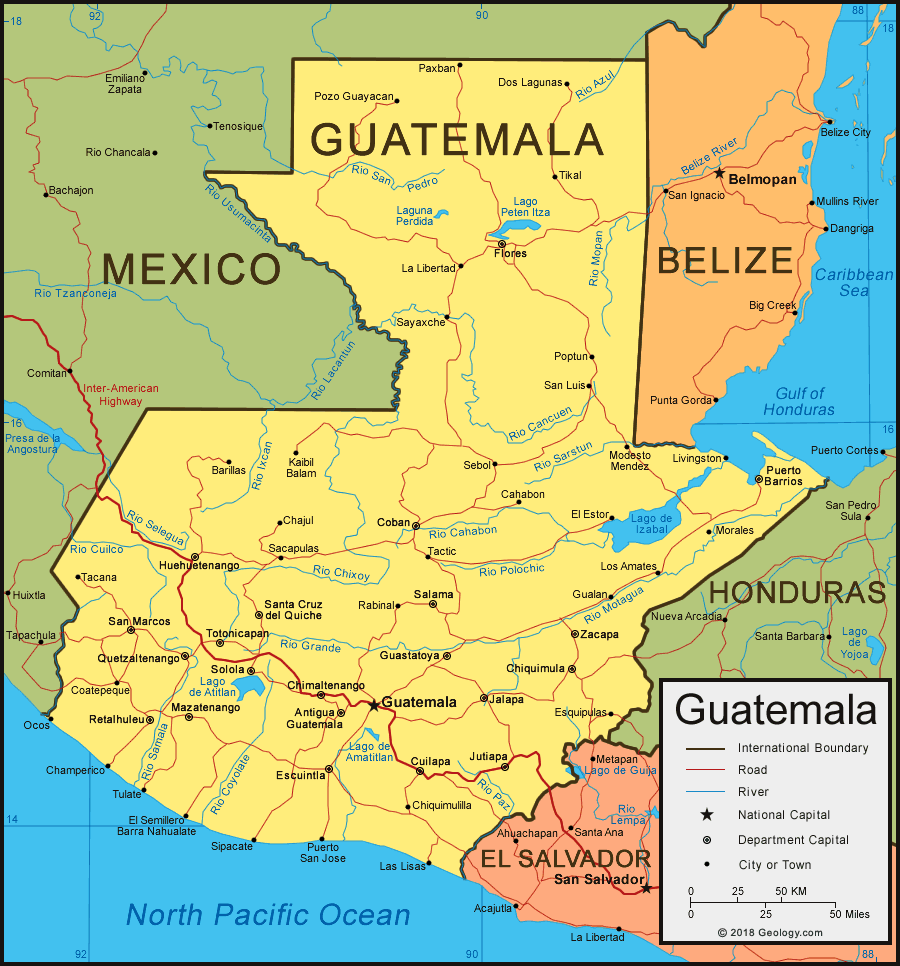
History of Cocoa
Two of the recurring questions in the cacao sector are where did Theobroma cacao L. originate, and was it domesticated in the Amazon in South America or Mesoamerica? What was the ancient Mayan civilization’s role in Guatemala in cacao history and domestication?
To provide a broad answer to these questions, we want to share a brief history of Theobroma cacao L. in Guatemala.
Genomic evidence obtained during research projects and published between 2002-2012 has demonstrated that the greatest diversity and origin of Theobroma cacao L. is in the Upper Amazon in South America, where the cacao tree was probably widely distributed in the Western Amazon before the onset of glaciation (22,000 – 12,000 BP). Based on archeological evidence, this region has recently been proposed as the origin of the domestication of cacao. This hypothesis is supported by results obtained by a research group and published in 2018, where they found traces of theobromine, ancient DNA, and starch granules of Theobroma cacao L. in selected artifacts from Santa Ana La Florida (SALF), site in southeast Ecuador, dated around 5,450 – 5,300 calibrated years before present (cal. y BP, around 3500 BCE). These predate the earlier known use in Mesoamerica by 1.5 millennia, findings that changed completely the way we knew cacao history to date.
Pre-Classic (2000 BCE – 250 CE)
Domestication and early use of cacao as chocolate, either as a beverage or food, has been hard to pin down due to cacao’s wide distribution. However, ongoing research and the fast development of novel research methods like the use of analytical chemistry, genomics, and more are contributing to a better understanding of cacao’s domestication, early use, and role in ancient civilizations. Whatever the origin of the domestication and use of T. cacao L., Mesoamerica seems to be where it developed and expanded its use and importance among ancient civilizations as a luxury drink, trade item, tribute item, and form of currency.
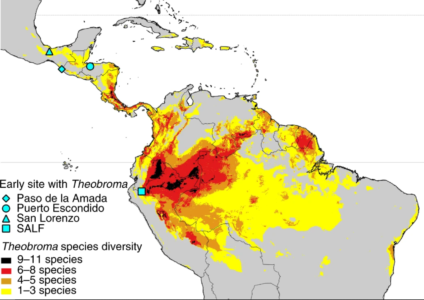
Cacao cultivation, domestication, and chocolate processing are considered Mesoamerican innovations. Cacao’s use can be traced back to the pre-Columbian period. There is written evidence of the importance of cacao among the Aztec and Maya civilization at the time of the Spanish conquest. From the linguistics standpoint, evidence suggests the Olmec, who spoked ancestral Mixe-Zoquean, used the word ka-ka-wa o cacao as early as 1000 BCE. Therefore, one hypothesis states that they were the first to domesticate the cacao tree and discovered the chocolate-making process.
However, archaeological research has demonstrated the use of cacao in earlier times than the proposed dates from the linguistic evidence. Among the archeological evidence, a neckless jar from 1900-1500 BCE at the Mokaya site of Paso de la Amada on the Pacific Coast of Chiapas, Mexico, tested positive for theobromine residues. It was most likely used to display valued drinks rather than for cooking. The Mokaya were pre-Olmec cultures of the Soconusco region in Mexico and parts of the Pacific Coast of western Guatemala. Other samples showed theobromine traces in vessels or cacao residue from vessels from San Lorenzo Olmec (Gulf Coast) dated between 1800 – 1000 BCE, samples dated from 1650 – 1500 BCE from El Manatí on the Gulf Coast of Veracruz, and ceramic forms dated 1200-1100 BCE in northern Honduras at Puerto Escondido.
In Guatemala, research published in 2017 reported cacao residues in ten vessels (five bowls, three jars, and two plates) dated in the late pre-Classic (600 BCE – 200 CE) from the Proyecto Arqueológico Chocolá located in Suchitepequez. These are the oldest pieces of evidence of some cacao consumption in Guatemala. During the mid to late pre-Classic Period, some of the most important cities and archeological sites were located in Guatemala, including Kaminaljuyu, Chocolá in Suchitepequez, Tak’alik Ab’aj’ in Retalhuleu, El Ceibal, El Mirador, Nakbe, El Naranjo, Dos Pilas, Piedras Negras, Rio Azul, and Tikal in Petén.
Mayan cities and archeological sites in southern Guatemala were important for the early long-distance trade of cacao, and a major heartland for cacao production in Mesoamerica. These research findings demonstrate the domestication and use of Theobroma cacao L. (in different forms) before the Maya pre-Classic period in South America and its use, trade, and production during the early Maya pre-Classic Period in Mesoamerica, in regions next to the Guatemala-Mexico border in the Pacific Coast, the Guatemala-Honduras border in the Atlantic Coast, and the mid to late pre-Classic, in different important ancient Maya cities in Guatemala.
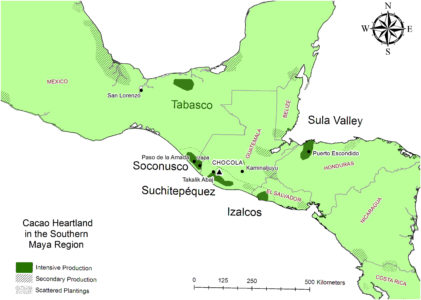
Classic Period (250 – 900 CE)
The Mayan civilization reached its highest importance during the Classic Period (250 – 900 CE), with more than 40 cities were established during this period with a total population of around 50,000. Tikal was considered an empire in Mayan history during the Classic Period, but at the end of the period, most Maya cities had collapsed. Back in 1989, in Guatemala, W. Jeffrey Hurst, a food and bioanalytical scientist at The Hershey Company (now retired), conducted a chemical analysis on samples collected from ceramic vessels found in an early Classic (460 – 480 CE) Maya tomb in Rio Azul, Petén (close to the borders of Mexico and Belize). The analysis confirmed the presence of theobromine and caffeine, which was an indication that these vessels were used to serve or contain cacao in some form.
Cacao is the only Mesoamerican commodity in which theobromine is the primary methylxanthine, so this compound was used as the analytical marker. These samples were analyzed in the laboratories of the Hershey Foods Corporation Technical Center, where samples for evaluation were extracted from the vessels using water and filtered before analysis using high-pressure liquid chromatography (HPLC) coupled with Thermospray MS. It was the first time that an analytical chemistry approach was used to identify chemical residues of Theobroma cacao L. in ancient ceramic vessels. This approach opened a new research area to identify trace chemical compounds in ancient samples during the following years, providing new insights and changing what we know about the cacao domestication process.
In addition to the cacao chemical markers, these vessels found in Rio Azul (Petén, Guatemala) were also decorated with hieroglyphs, presumable with phonetic values for the word “cacao” in the Mayan language, which confirmed the use of these vessels for containing or transporting cacao. A total of four vessels from Tomb 19 in Rio Azul confirmed the presence of cacao chemical residues. The results of this research in Rio Azul, at the time, provided the earliest date of cacao consumption, traced back to the 5th century CE by a Mesoamerican civilization.

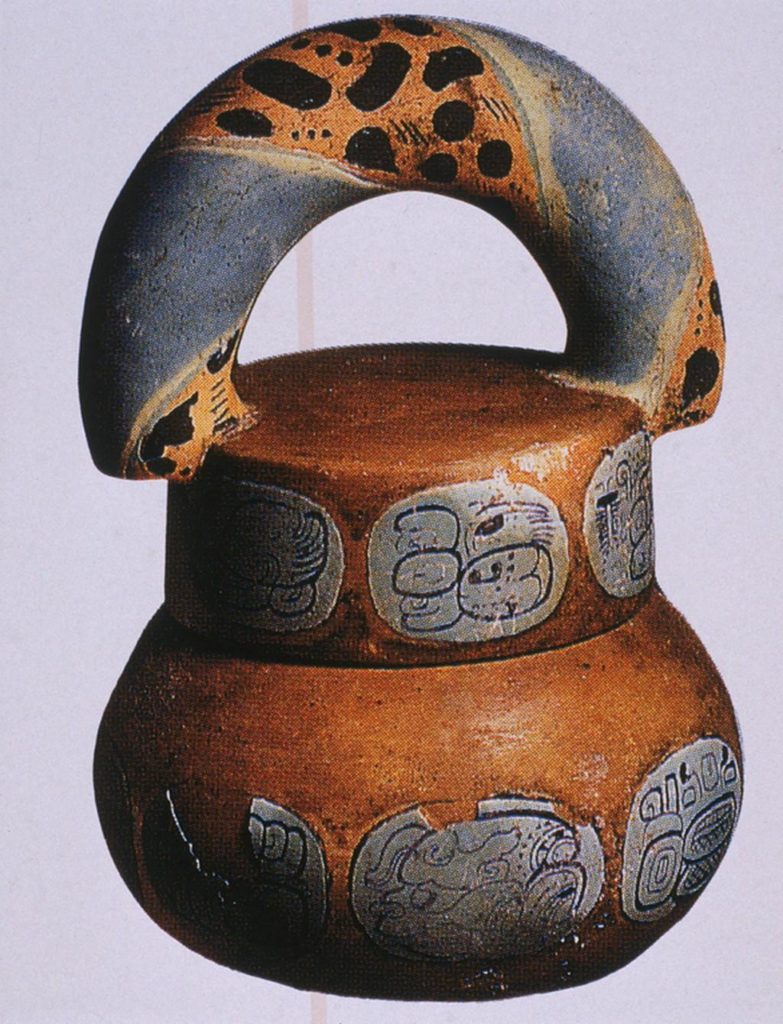
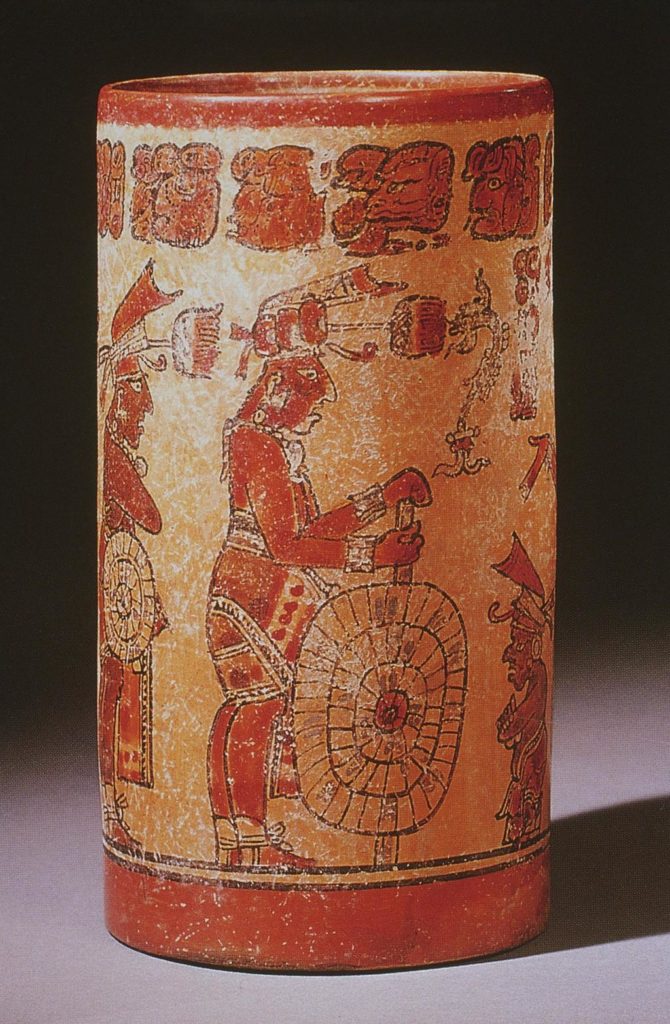
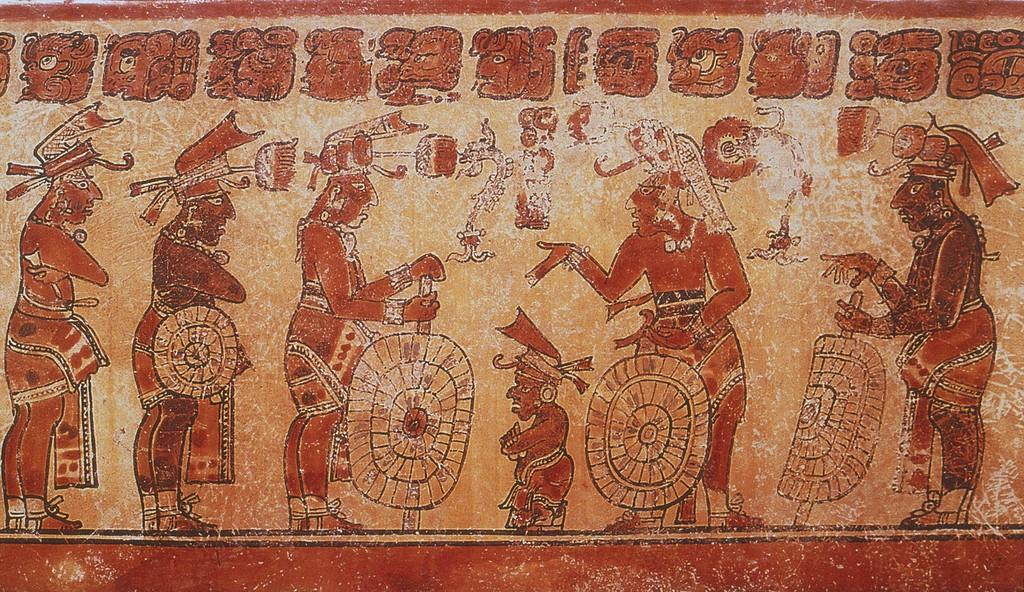
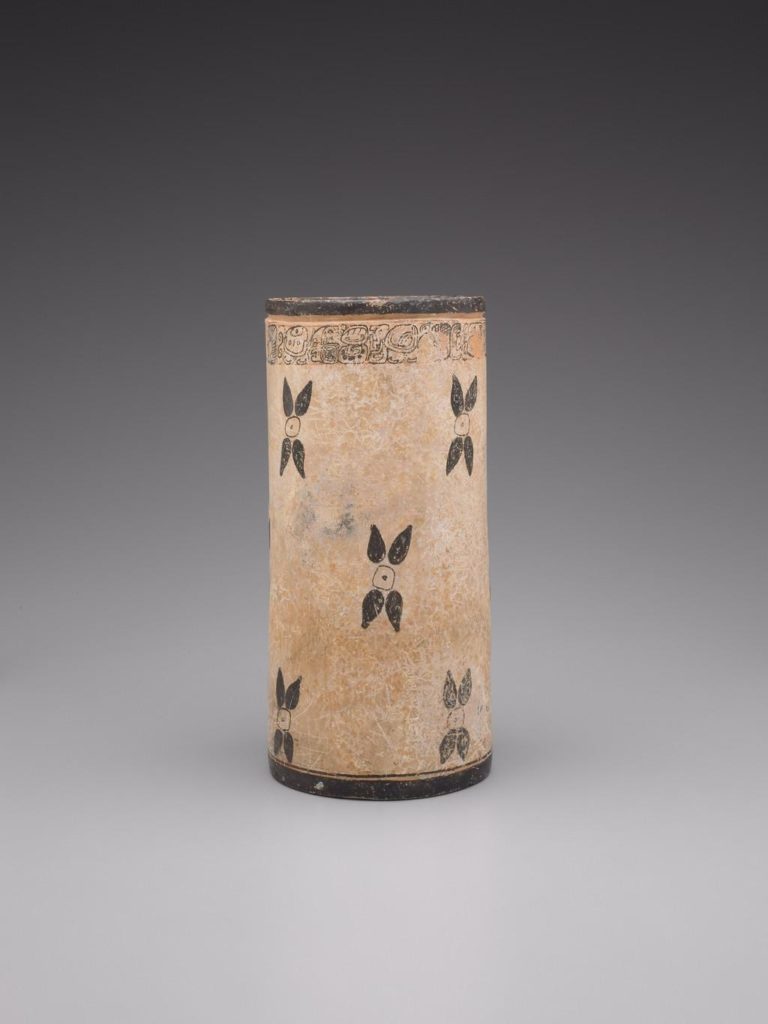
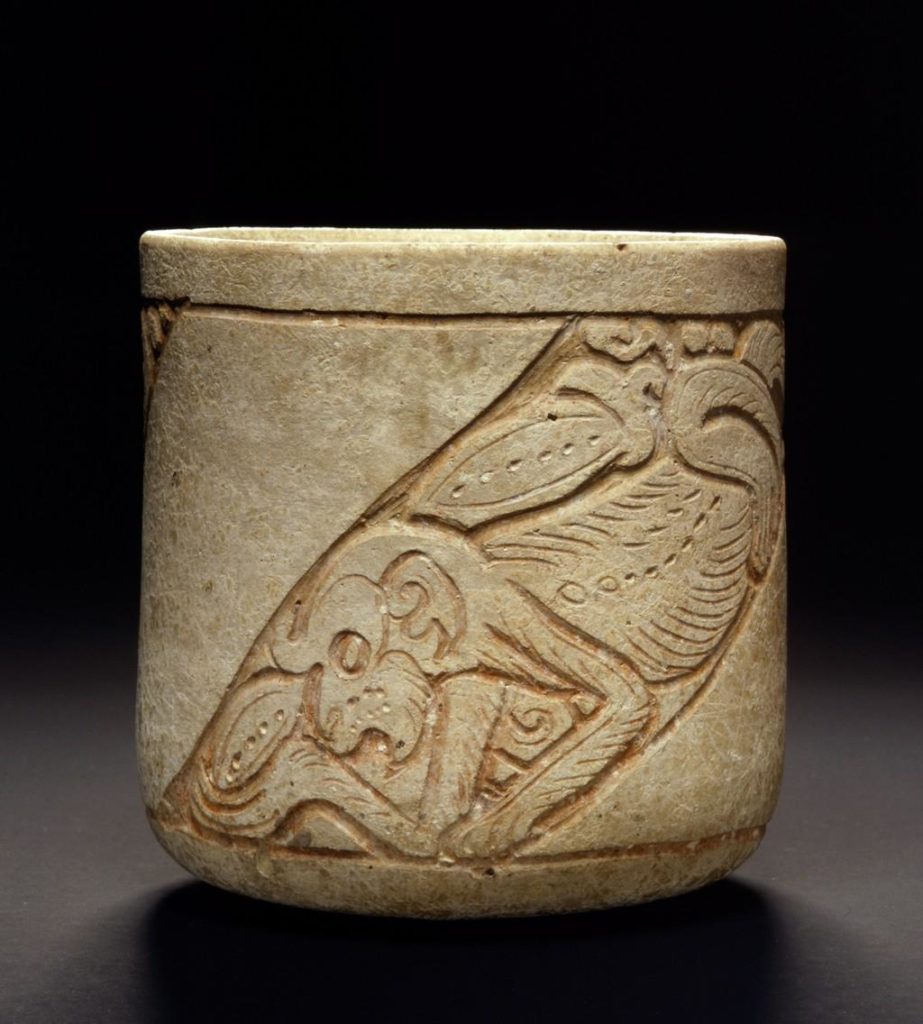
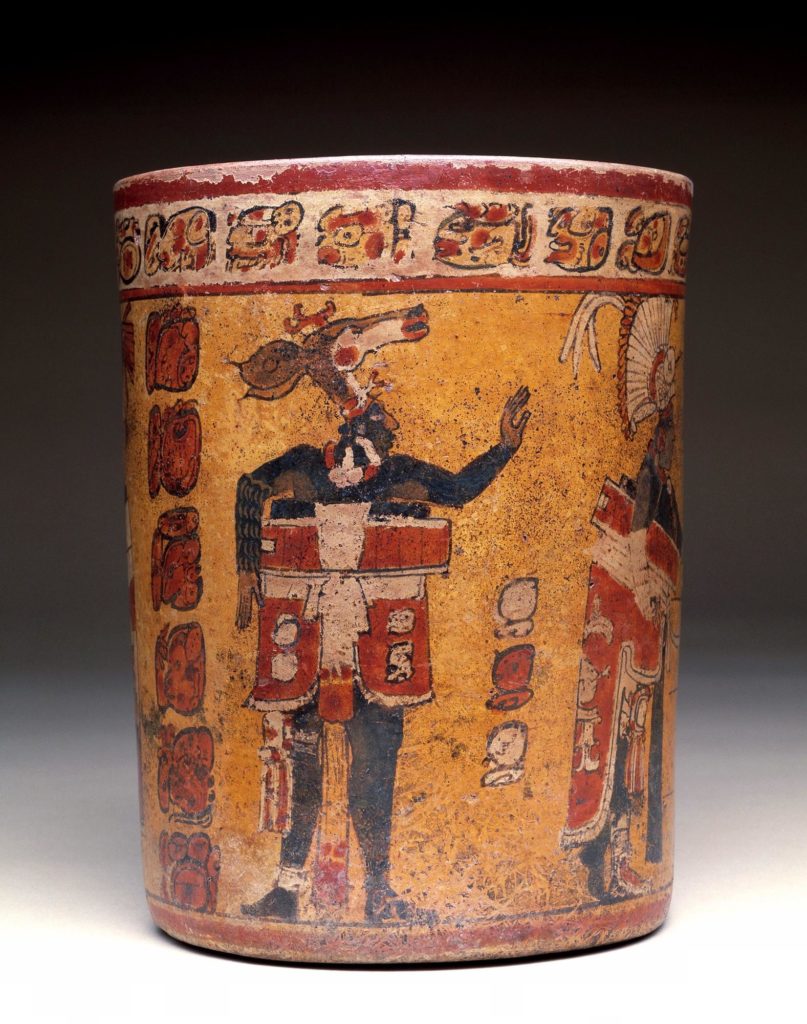
Contemporary Period (1940s to date)
Cacao cultivation in the Mayan culture passed through generations, becoming part of the subsistence agriculture in different parts of the country, especially in the Pacific Coast of Guatemala, where it has a long history since ancient times. For many years, this crop and agriculture generally lacked government support due to different factors (for example, lack of resources, interest, political interests). In Alta Verapaz, the existence of small cacao farms is documented (through systematic interviews) as early as the 1940s in Cahabón. Only a few private initiatives kept cacao cultivation for self-consumption and artisan processing.
It was not until the late 1950s that the support for agriculture development started (including cacao crops), with the creation of the National Agricultural Institute and implementation of the Agricultural Extension Service, an initiative supported by the United States Government through the program “Servicio Cooperativo Interameriacano de Agricultura” (SCIDA). Although this initiative focused more on export agriculture (such as coffee and cotton) rather than rural development, it still built agricultural capacity. By 1964, the agricultural census reported a total of 2,364 hectares cultivated in Escuintla, Retalhuleu, Quetzaltenango, Suchitepéquez, San Marcos, Izabal, Quiché, and Alta Verapaz.
In the mid-1970s, changes in the working strategy within the Ministry of Agriculture, Livestock, and Food (MAGA) reduced the support for cacao production (among other crops), leaving only two small initiatives for cacao research and development in the experimental stations of Los Brillantes and Navajoa. Government support for cacao resumed years later, in the mid-1980s, extending operations mainly in the Franja Transversal del Norte (FTN), the Polochic Valley, and Santa María Cahabón in Alta Verapaz.
In the Polochic Valley, it is documented (through systematic interviews) that cacao was cultivated initially between 1981-1983 promoted by DIGESA (Dirección General de Servicios Agrícolas) in some regions and by individual interest in other areas.
During the 1970s and 1980s, cacao was produced mainly in the Pacific Coast, where Suchitepéquez was the primary producing department in the country, especially in San Antonio municipality, where it was among crops contributing to social and economic growth. The production scale and technology level depended on the micro-climate and farmers’ socioeconomic conditions. While most large exporting companies focused on sugar cane and banana production, characterized by extensive production areas, high technical level, and loan access. However, cacao farmers had different socioeconomic statuses, determining the production scale and technology employed.
From 1989 to 1993, the five-year project PROCACAO executed by Inter-American Institute for Cooperation on Agriculture (IICA) also contributed to cacao production improvement. In a diagnostic study in 1989, the IICA reported that small farmers produced 80% of total cacao production, characterized by low productivity and poor quality.
Between 2001 and 2021, several initiatives focused on developing cacao cultivation and processing. In 2001, the UN International Fund for Agricultural Development (IFAD) funded the Rural Development Program for Las Verapaces (PRODEVER). Between 2004-2006, PRODEVER built eight new cacao processing facilities to promote central fermentation and drying to achieve higher quality and consistency. Several small farmer associations were formed to promote central processing, high quality, traceability, and increase total product offer. However, only some organizations succeeded, while others disappeared entirely. In Coban, specifically in Lachua region, it was not until 2005 that the alliance of IUCN, FUNDALACHUA, and MAGA established the first 200 cacao hectares as part of Proyecto Laguna Lachua (PLL). PLL was a project focused on natural resources conservation and rural development started in 1997 in Lachua region. Finally, in 2008 the Proyecto Cacao Centroamérica (PCC) was implemented by CATIE in Northern and Southern Guatemala. These three initiatives set the basis for the new cacao era in Guatemala.
After 2010, several actors, such as the Sustainable Rural Development Program for the Northern Region (PRODENORTE), CATIE, MAGA-FIDA, Fundasistemas Foundation, the Ministry of Economy in Guatemala, Inter-American Foundation, Inter-American Institute for Cooperation on Agriculture, Cacao Verapaz, Rikolto, UICN, Heifer International, Mercy Corps, and the Federation of Cooperatives of Las Verapaces (FEDECOVERA) continued strengthening cacao production and processing, as well as providing different market options for commercialization around the country. Recently, in 2018 the MOCCA project joined the efforts to cacao value chain development in Guatemala.
Cacao cultivation has passed through generations and remains part of the subsistence agriculture in Guatemala.
Producing Regions
There are two main producing regions in Guatemala: the Northern region comprised of Petén, Alta Verapaz, Quiché, and Izabal; and the Southern region composed by Escuintla, Retalhuleu, Quetzaltenango, Suchitepéquez, and San Marcos.
There are several essential stakeholders in the Guatemala cacao value chain. Here are some of the important actors and stakeholders in the country. This is not intended to be a comprehensive list.
Northern Region
The Northern cacao producing region is comprised of Petén, Alta Verapaz, Quiché, and Izabal. In Alta Verapaz, the existence of small cacao farms is reported as early as the 1940s in Cahabón. However, it was not intensively promoted until the 1980s and the early 2000s. Currently, Cahabon is the principal municipality producing cacao in Alta Verapaz, accounting for 30% of the national production, mainly cultivated by small cacao farmers. In this region, farmers are either individually producing and selling fresh cacao in the local market or processing cacao in central locations and selling it to specialized markets.

Asociación de Productores orgánicos para el Desarrollo Integral del Polochic – APODIP –
APODIP is a small farmers’ association located in Campur village, La Tinta, Alta Verapaz. Its membership comprises 495 families distributed in 35 villages in the Polochic Valley, next to the Sierra de Las Minas biosphere. The Sierra de Las Minas Biosphere Reserve is one of the richest ecological reserves in Central America, and the Polochic Valley is said to be one of the hottest microclimates in Guatemala, which contributes to the unique flavor of their cocoa: a balanced nutty and chocolate taste with hints of caramel.
Website: https://www.apodip.org/
Contact: Marvin López (General Manager) at marvin@apodip.org or +502 4001 3404
Location: Campur village, La Tinta, Alta Verapaz
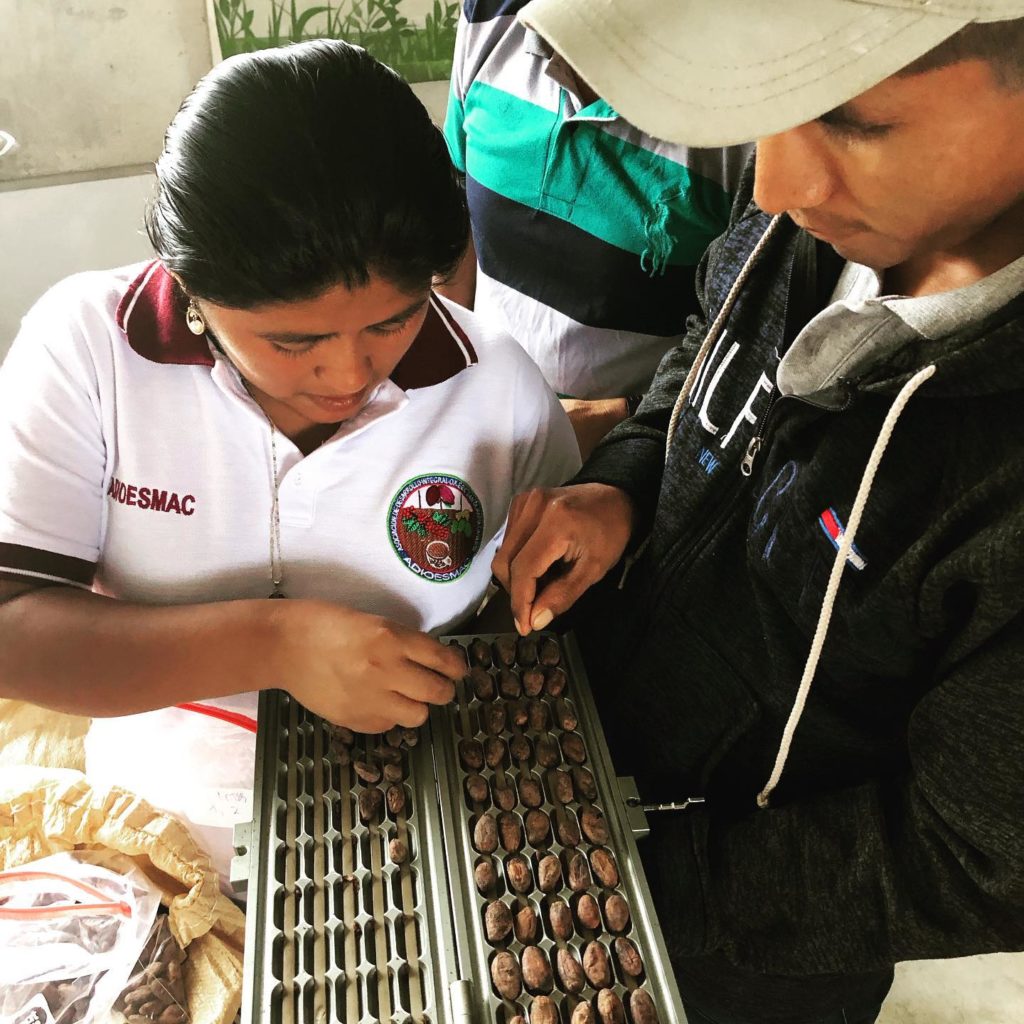
Asociación de Desarrollo Integral Ox eek’ Santa María Cahabón -ADIOESMAC-
Founded in 2004 and located in Tzalamtun village, this organization is characterized by its leadership among small farmers in Cahabon. The organization cultivates and sells cacao, cardamom, cinnamon, and chili peppers. They process it using cascading wooden fermentation boxes and sun-dry it in a greenhouse dryer. Their first experience exporting cacao was in the early 2000s with Scharffenberger. Then cacao export was paused for a while but resumed in 2014 and continues to date to US bean-to-bar companies, especially Dandelion Chocolate. Due to its success in focusing on fine cacao production, other farmer associations followed and joined this business model, which opened new opportunities to the region. Other unique characteristics in ADIOESMAC are female empowerment and youth participation and their active participation in the local and national chapters of the Cacao Value chain.
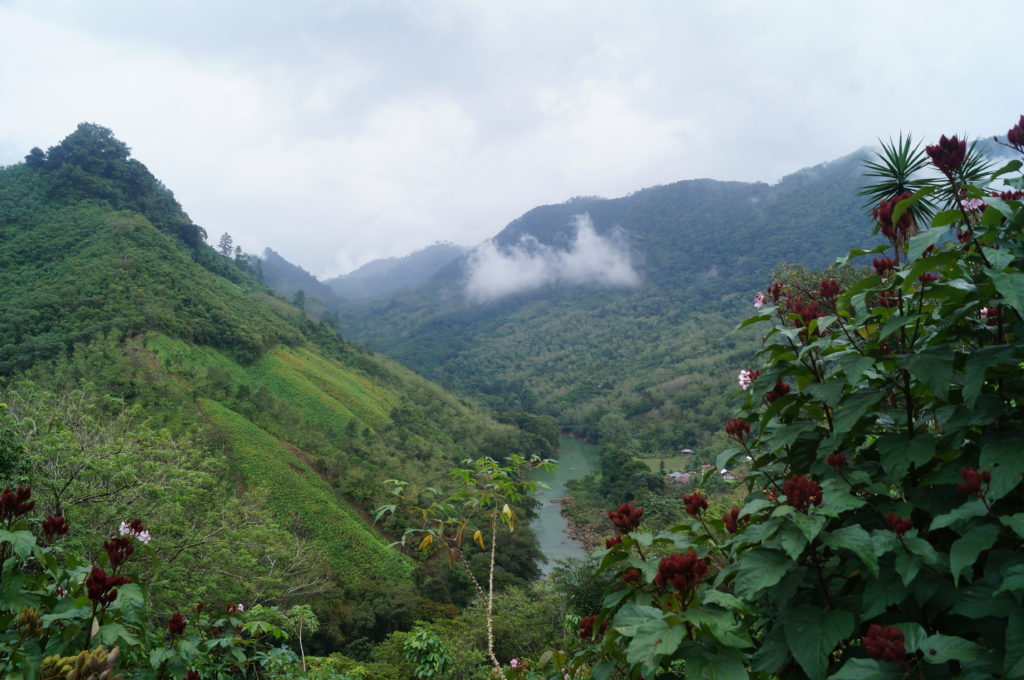
Asociación de Productores orgánicos para Asociación de Desarrollo Maya Chivite – ADEMAYACH –
ADEMAYACH is in San Juan Chivite Village, located along the Cahabon river. This village can be traced back to 1986, during the civil war, when Del Centavo Foundation acquired 180 hectares of land and provided it to Mayan families to establish a new village and cultivate coffee and cacao. In 1990 farmers started harvesting cacao and coffee, and in the years after, they paid the land back and became legal owners of their farms.
There are now around 150 families living in San Juan Chivite, all descendants of the original 64 families. From these families, there are 18 active members associated with ADEMAYACH, but membership is growing due to their successful cacao business model. In 2013 Fundasistemas Foundation was among the first NGOs working with farmers in associativity and cacao business development. It is through Fundasistemas that Cacao Verapaz connected with farmers in the village. In 2015, they were visited by Goodnow Farms, a bean-to-bar chocolate company in the US, and from this visit started a long-term relationship between farmers and Goodnow Farms.
This US-based company is playing a key role in improving livelihood among farmers in San Juan Chivite. In the same year (2015), the association received a vital investment from PRODENORTE focused on infrastructure building for post-harvest management and chocolate processing.
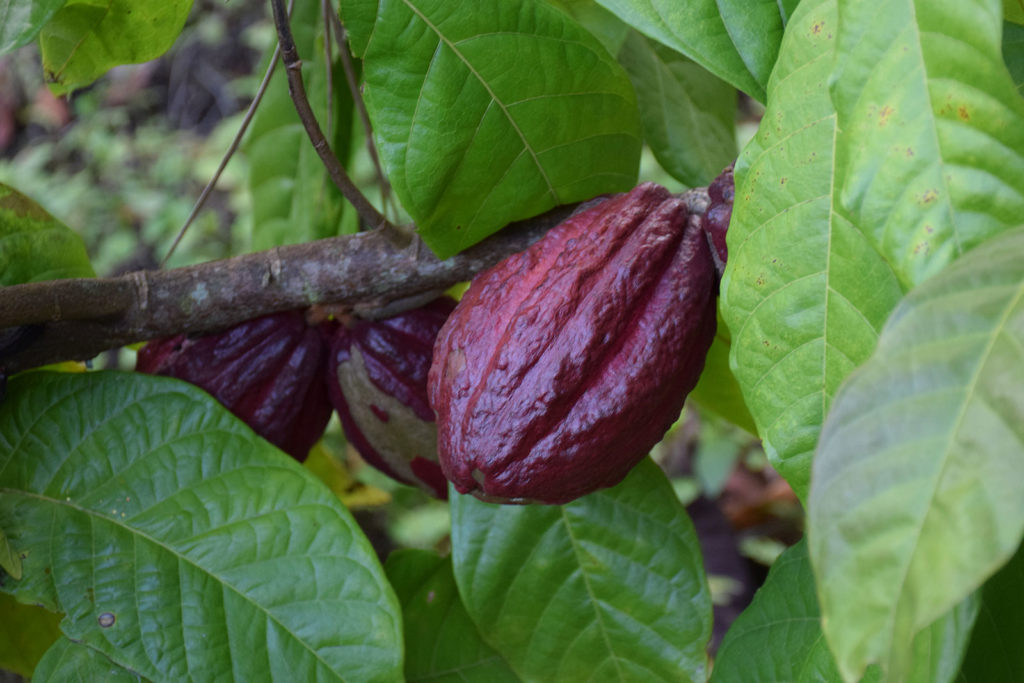
Cacao Fino de Guatemala S.A.
Finest cocoa of the “Indio Rojo / Mayan Red” variety from Guatemala: Our cocoa trees grow at two large Fincas, located in the northeast of Guatemala – in the heart of Central America, close to the Honduran border. Shaded by the canopy of tall trees and without artificial pesticides and fertilizers, the organic cocoa fruit is left to ripen naturally, developing its characteristic aromas over many days. The cocoa beans are harvested in Guatemala, carefully fermented, and subsequently sun-dried, all by hand. The beans are transported by sea from Puerto Santo Tomás de Castilla to Hamburg and offered to selected chocolate makers for further processing – either from bean-to-bar or into cocoa mass.
Website: http://www.kakao-fino.com/en/start.html
Contact: office@kakao-fino.com or +49 171 7788901
Location: North-East of Guatemala
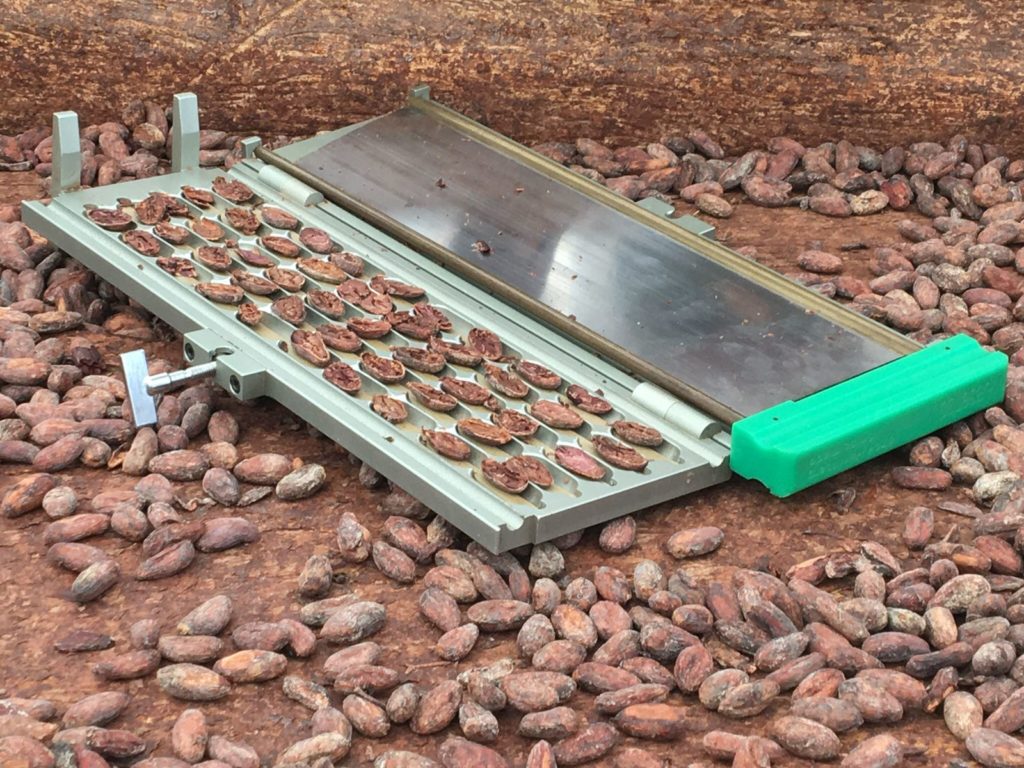
Cacao Verapaz
Cacao Verapaz is a private-owned company (part of Uncommon Cacao Group), founded by US investors in 2014. We are proud of leading exports of the best cacao produced in Guatemala, connecting small farmers with chocolate makers that appreciate fine flavor cacao beans. We are in Coban, Alta Verapaz in Northern Guatemala. We work with six Maya Q’eqchi’ small farmers’ associations. Cacao Verapaz is a pioneer in transparent cacao trade in Guatemala.
Website: https://www.cacaoverapaz.com/
Contact: info@cacaoverapaz.com or +502 7728-2906
Location: 1era Avenida 3-07 Zona 12, Cobán, Alta Verapaz
Federation of Cooperatives of the Verapaces (FEDECOVERA, RL)
Based in the city of Coban in Guatemala, FEDECOVERA, RL is an autonomous second level cooperative founded on February 23, 1976, and led by small producers organized in first level cooperatives and associations. Based in Coban in Guatemala, FEDECOVERA, RL is an autonomous second-level cooperative founded in 1976, led by small producers organized in first-level cooperatives and associations. In their 45 years of existence, they have played an essential role in economic development in rural areas in Guatemala, especially in Alta Verapaz. FEDECOVERA is active in eight value chains or products: cardamom, coffee, tea, allspice, cocoa, turmeric, essential oils, and sustainable forestry. It is the first organic cardamom and allspice producer and exporter globally; they have global business experience, exporting to the five continents; benefit around 33,000 producing families gathered in 42 cooperatives and more than 21 associations. Consequently, FEDECOVERA takes care of more than 100,000 people.
In 2021, Cooperativa Alianza, RL, a first-level cooperative and member of FEDECOVERA, located in the North of Guatemala, was awarded as one of the top five fine flavor cacao beans in-country during the Cocoa of Excellence Program for the second year in a row. This cooperative is dedicated to cultivating and commercializing agricultural products, such as cacao beans, cardamom, allspice, and turmeric. They are produced by small-scale farmers, both as individual members and in organized groups, and the crops are managed according to agroforestry, organic and Fair-Trade practices. The cooperative has been organically certified and Fair-Trade certified.
Website: https://www.fedecovera.com/
Contact: For purchasing information, contact Samy Lopez, COO & Business Development at slopez@fedecovera.com or +502 7950-0741
Location (Headquarters): 6a Calle 5-05 Zona 11, Coban, Alta Verapaz, Guatemala
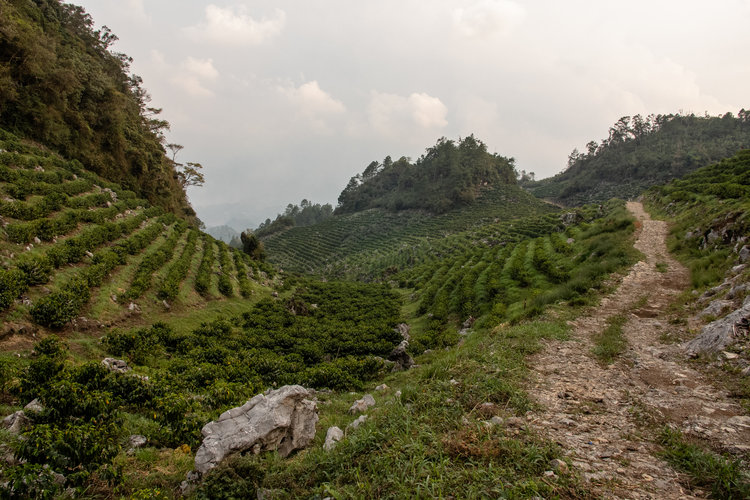
Finca Chimelb / 1-2-Tree
Finca Chimelb is a magnificent 4,500-hectare farm in Lanquín, Alta Verapaz. Chimelb is the largest cacao farm in Alta Verapaz, with 250 hectares of cacao cultivation. Specialty coffee, rubber, and cardamom are also grown, and 2,300 hectares of natural forest are protected. Finca Chimelb has an exceptionally diverse clonal garden to evaluate heirloom cacaos and new clones, monitor tree productivity and compatibility, and use these data to increase yields. The farm espouses environmentally friendly cultivation, planting shade crops like rubber trees to control soil erosion, planting cover crops like Brachiaria grass, and reproducing beneficial fungi to restore less fertile areas naturally.
As part of the “One by One” program, Finca Chimelb has hosted numerous trainings for local smallholder farmers in collaboration with Operagro CH and takes its social responsibility seriously in contributing to the Guatemalan cacao industry through a combination of training, employment, clonal development, and research into best practices for the local conditions.
Website: https://www.12tree.de/chimelb
Contact: cocoa@12Tree.de
Location: Lanquín, Alta Verapaz

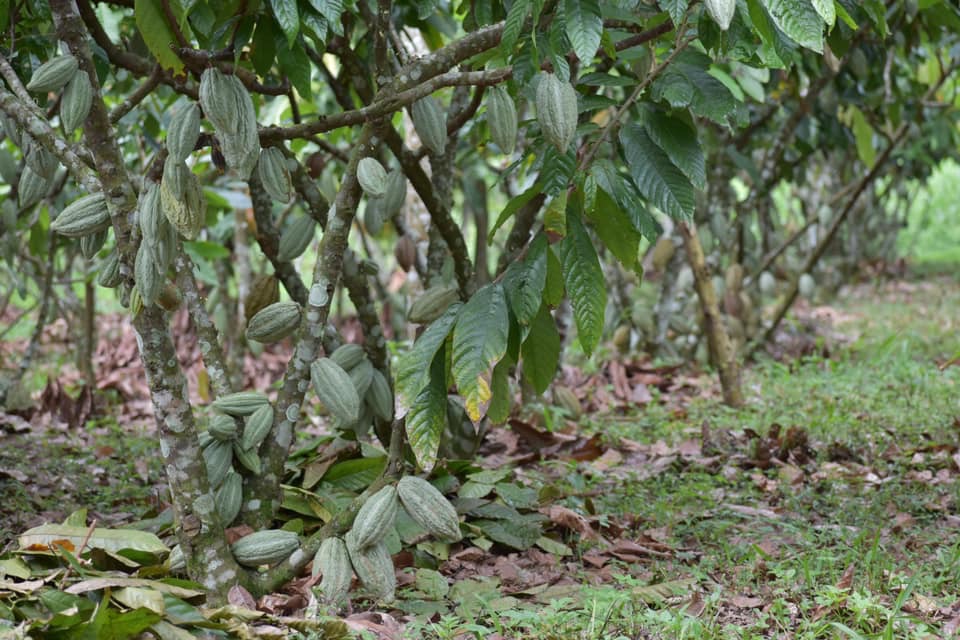
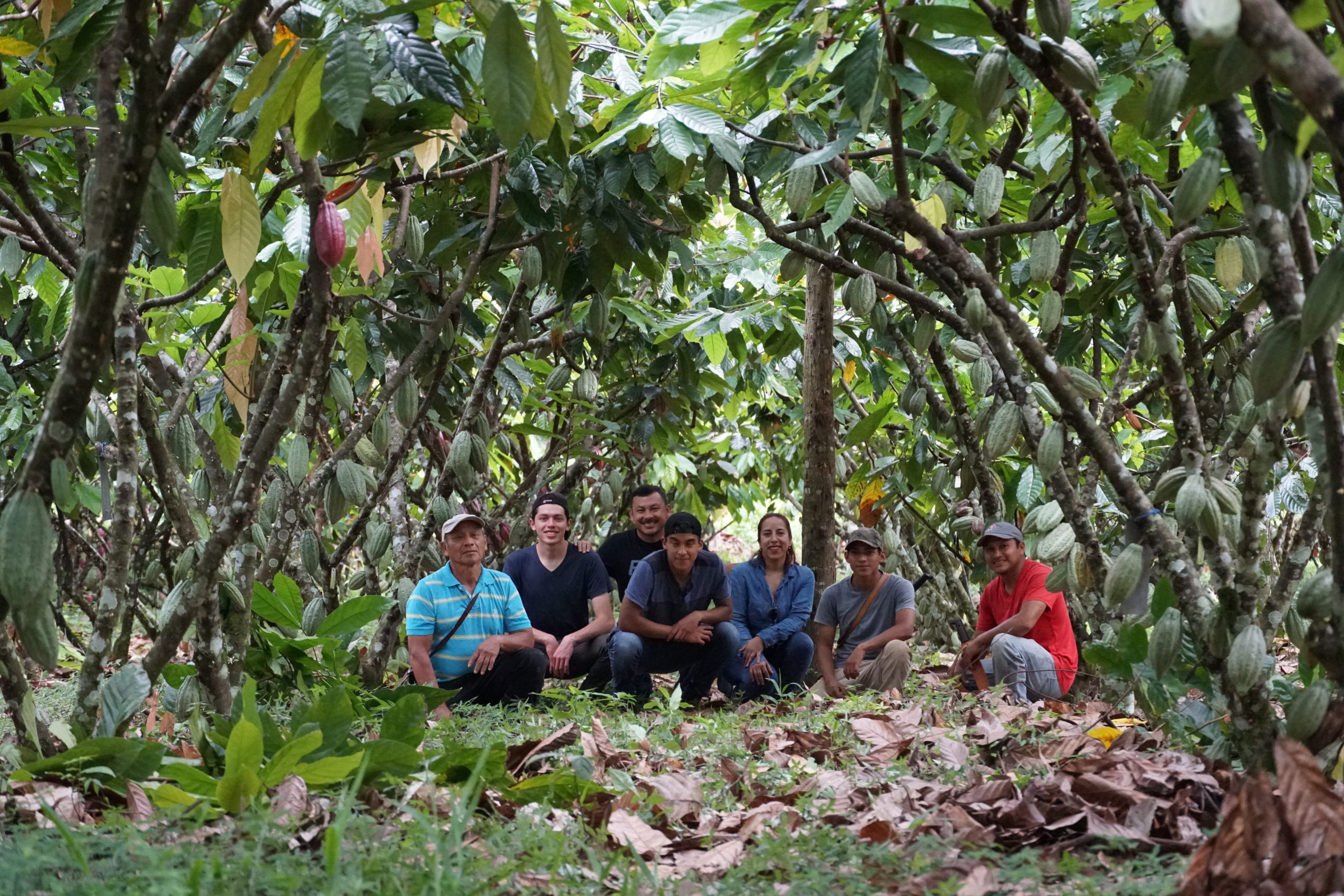
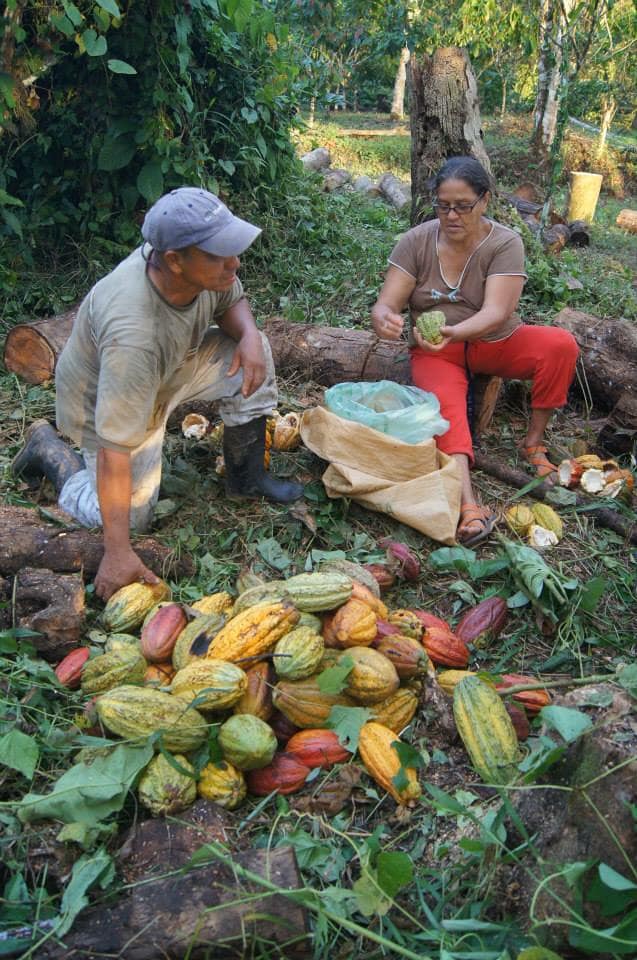
Finca Ana María
Finca Ana María is a family farm, owned by the Ac Tot family, a family with several years of tradition in cacao production since our grandparents stablished the farm in the 1950s. They are in Rio Negro riverbanks, a zone of influence in Lachuá Lake National Park located in Coban, Alta Verapaz in the North of Guatemala.
After spending several years in their genetic research program, we have established a collection and clonal gardens with selected cacaos, Trinitario and Criollo. Finca Ana María’s collection is designated as the FAML selections and can also be observed under production in our farm. Along with their genetic research, they have also developed technology and protocols to improve our crop management, making Finca Ana María’s farm production more efficient, friendly, and environmentally sustainable.
Finca Ana María’s core objective is to provide to the chocolate industry our cacaos with the best aroma and flavor profile, which is accomplished through a highly specialized and tailored postharvest processing, implementing specific fermentation and drying protocols for each cacao type.
Finca Ana María also provides technical assistance to new farms interested in starting cacao production systems. Additionally, their farm provides the seedlings for establishment, produced with their selected genetic materials, as well as training, business plan development, and technical support during establishment, postharvest and cacao beans trading.
Finca Ana María farm is committed in providing cacao beans with traceability and the best quality. Currently, their customers are in the local industry, Europe, Asia, and the United States.
Contact: fincaanamaria@gmail.com
Location: Cobán, Alta Verapaz
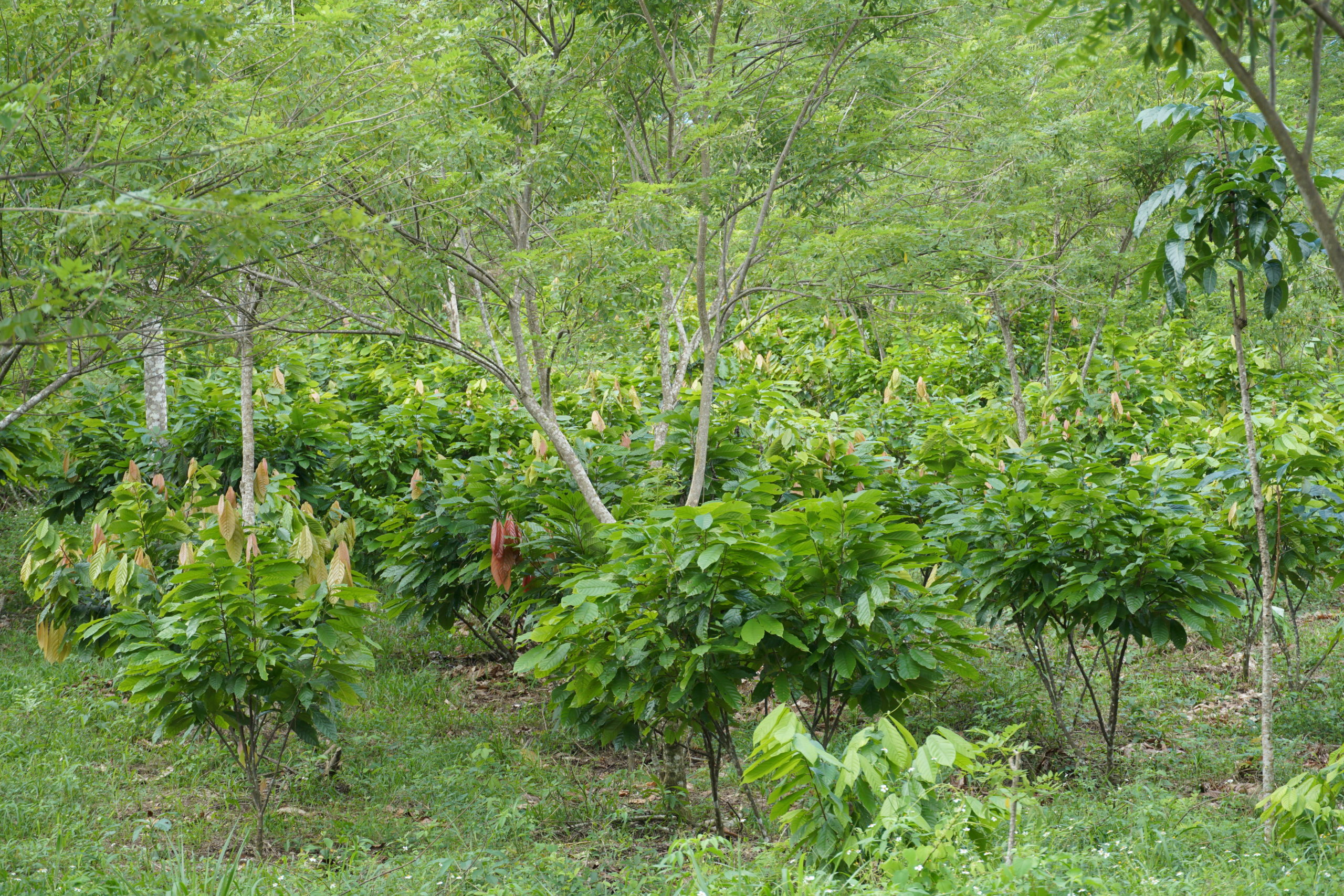
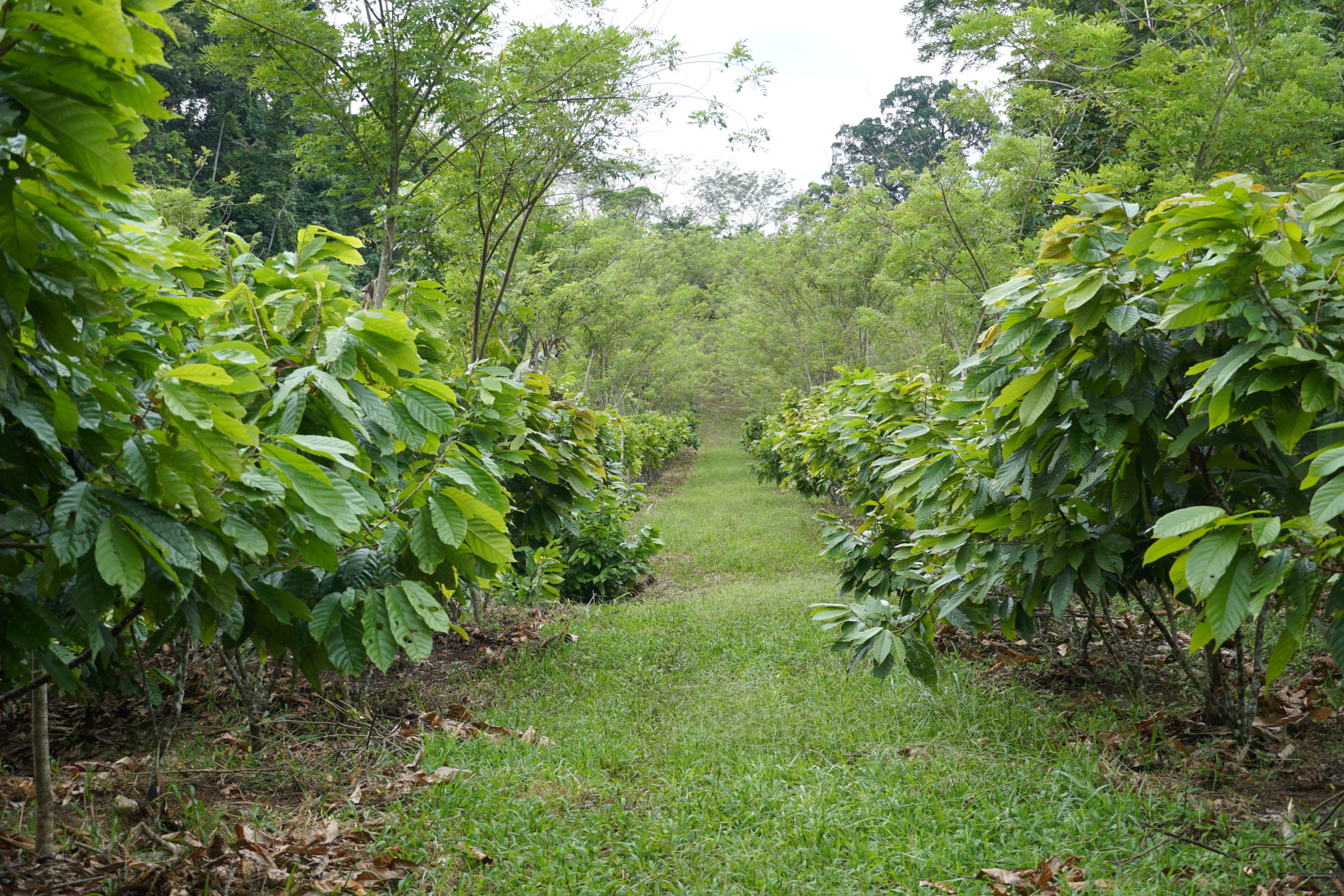
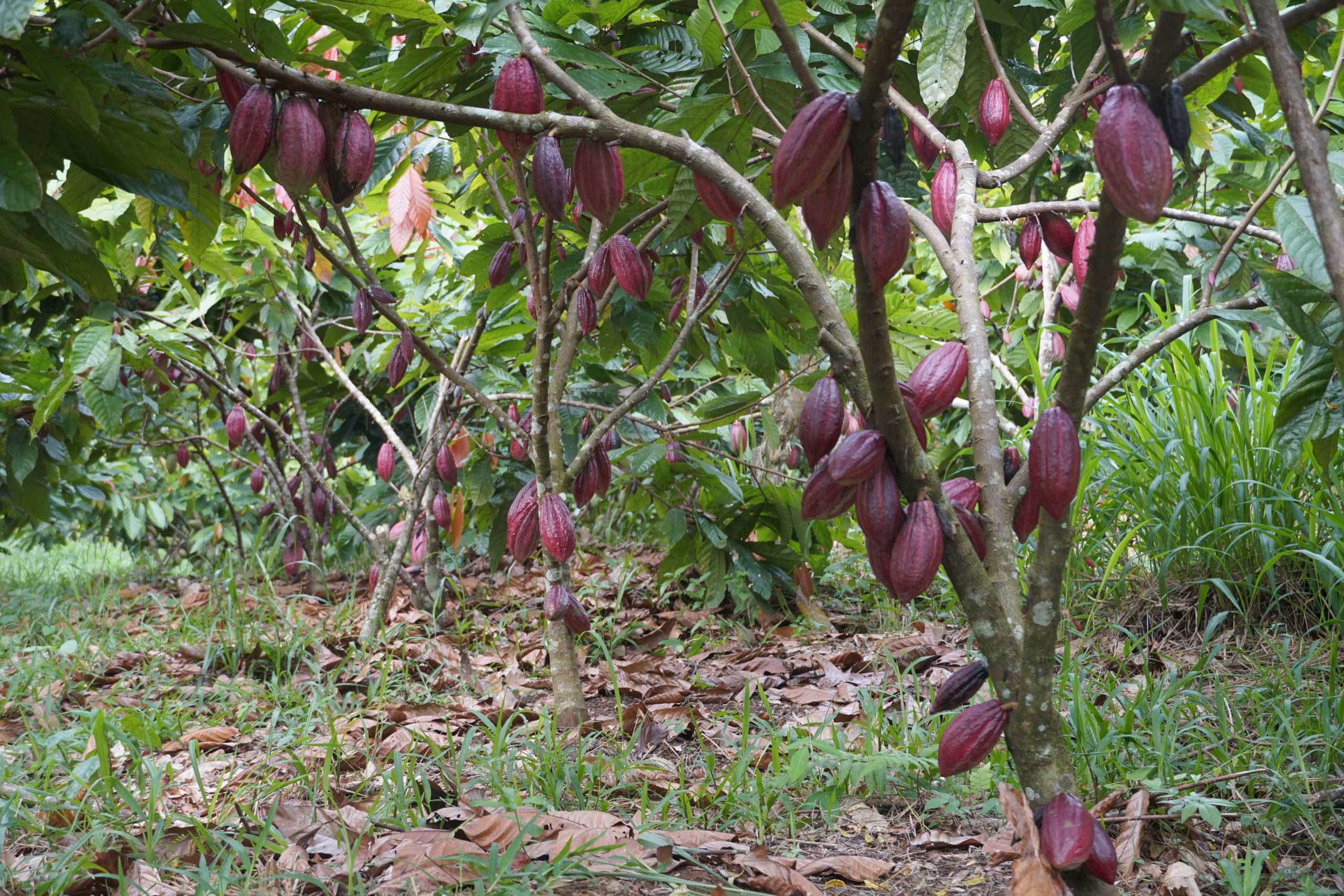
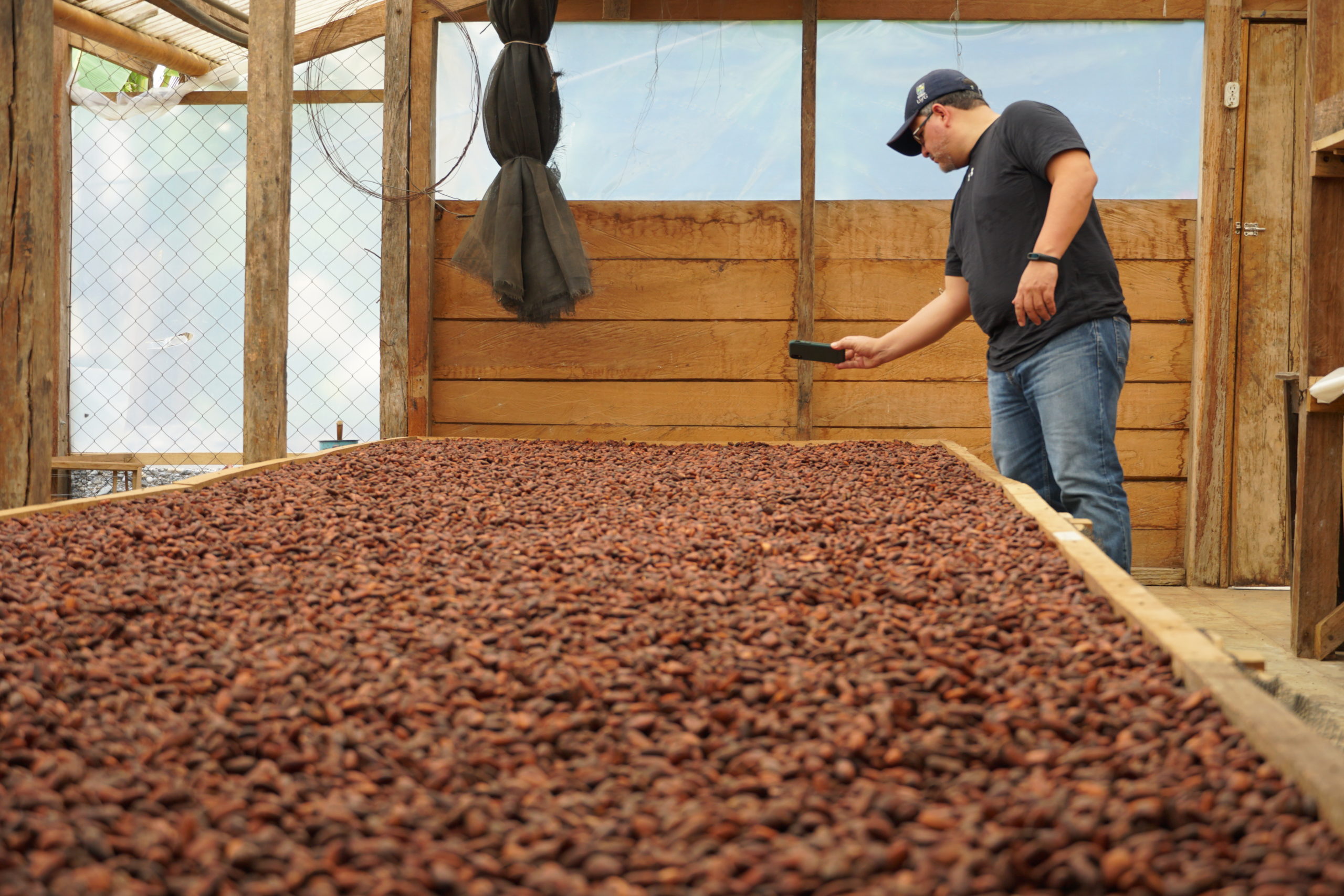
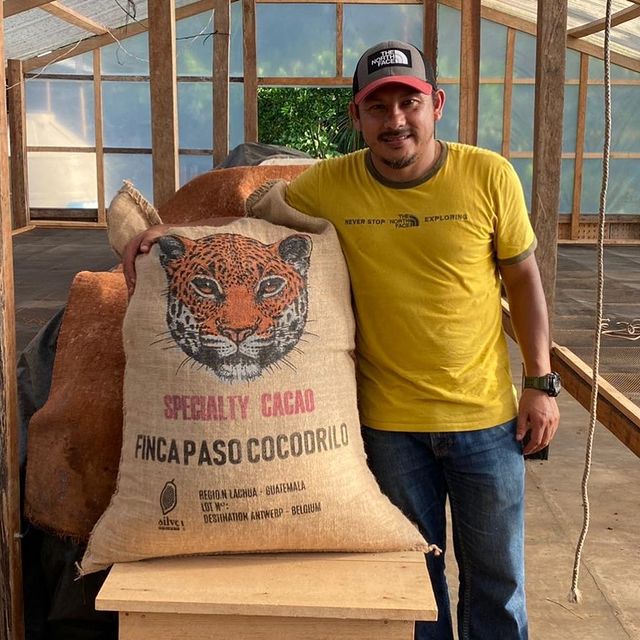
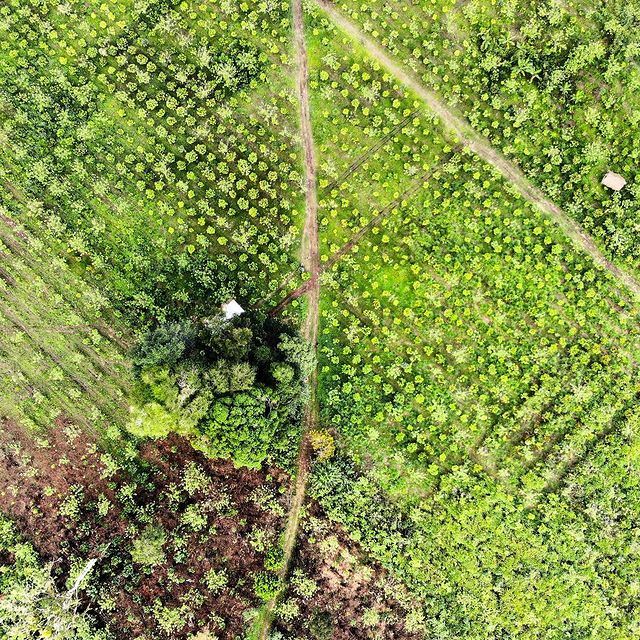
Guatemala Cacao Company, S.A.
Guatemala Cacao Company is a privately-owned company dedicated to fine flavor cacao production through agroforestry systems. These production systems contribute to the restoration of the forestry landscape (aligned with the implementation of a no-deforestation public policy), creating biological corridors in the surroundings of Laguna Lachuá National Park.
Our cacao plantations are in located in two farms, Paso Cocodrilo and Rio Negro. These two farms produce cacao blends with unique flavor and aroma profiles, as a result of our Trinitario clones and enriched by the terroir generated under the microclimate characteristic in our region. Currently, our cacao beans are sold in Europe, Asia, and the local market.
Contact: aandcpro@gmail.com / jasgodoy77@gmail.com
Location: Aldea Salacuim, Cobán, Alta Verapaz
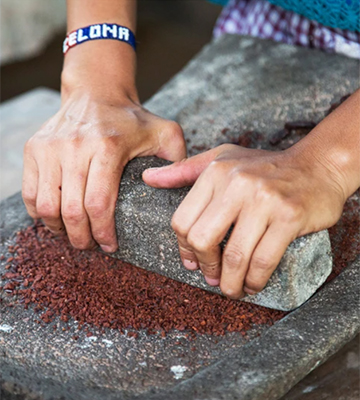
Finca El Porvenir/Dalileo Chocolate
We create our cacao on-site and work hard to create regenerative agroforestry systems. In harvesting cacao beans, we are committed to rescuing the cacao criollo variety for others to experience its maximum benefits of taste, texture, pleasure, and medicinal properties. Dalileo specializes in producing ceremonial grade cacao and single-origin chocolate from our land nestled in the Sierra de las Minas Mountain range in the Polochic Valley.
We work for the surrounding partners. Dalileo started with one family who discovered a nearly barren piece of land in the state of Alta Verapaz. We employ several workers from the surrounding area, and we work together to maintain a mountain covered in native plants, hardwood trees, fruits, flowers, butterflies, bees, and animals. Everyone is part of the process, and every effort builds a better environment.
Website: https://dalileocacao.com/

Fundación Fray Domingo de Vico / UNIP, S.A / Sununk
Fundación Fray Domingo de Vico is an NGO founded in 2008 with initial interventions by its founder in Cahabon in the early 2000s. It is one of the essential partners of small cacao farmers in Cahabon in Northern Guatemala. It runs a technical high school focused on Agriculture and Agroecology, a community radio, and a business branch called INUP, SA, with Sununk as the commercial brand.
Under this brand, there are several locally sourced and processed products, including chocolate. It benefits more than 4,200 small farmers with technical support, processing, and commercialization of different crops, including cacao. INUP, SA purchase fresh cacao from farmers and process it in a central location to assure quality and consistency. This locally owned company has been one of the most consistent and trusted market options for small farmers in this region for several years due to its strong relationship with the local community and holistic interventions.
Fundación Laguna Lachuá -FUNDALACHUA-
FUNDALACHUA was created during the last phase of Proyecto Laguna Lachua (PLL). PLL was a project focused on natural resources conservation and rural development started in 1997 in Lachua region. FUNDALACHUA is a second-level organization, non-governmental, private, independent, and non-profit, which serve as a strategic partner for local indigenous organizations in the Lachuá region. As part of the last phase in PLL’s commercialization and diversification components, several sustainable projects were implemented: beekeeping (or apiculture), textiles, xate (Chamaedorea sp.), and cacao production. Cacao cultivation was promoted during PLL, implemented by UICN and the National Forest Institute (INAB).
In 2005, the strategic alliance of IUCN, FUNDALACHUA, and MAGA allowed the establishment of 200 cacao hectares. This intervention contributed to moving the cacao crop from being a backyard tree to a small-scale producing farm, with each farmer owning at least 0.5 hectares, which was a significantly larger extension compared to the few trees commonly owned in their backyards. By 2010, harvesting began across the 170 small-scale cacao farms, and producers demanded processing facilities and market options for commercialization. Therefore, in 2011 FUNDALACHUA and IUCN developed strategic alliances with Fundasistemas Foundation and CHOCOGUATEMAYA to strengthen post-harvest processing and commercialization. Between 2012-2013 Fundasistemas Foundation and CATIE, with funding from the Ministry of Economy (MINECO), built fermentation and drying facilities in three different locations to promote high quality and consistent central processing.
Consequently, local and international cacao buyers started to visit these organizations. In 2013, FUNDALACHUA signed its first fine cacao export contract with Lake Champlain Chocolates, a US chocolate company, and created a new business model that completely changed the cacao trade model Guatemala. FUNDALACHUA, being one of the latest regions in establishing cacao as a commercial crop, was among the first in the region to build long-term relationships with chocolate companies in the international market and set the path for many organizations that followed this business model.
Website: https://fundalachua.org/
Contact: Edgar Raúl Quezada Aguilar (General Manager) at fundalachua@gmail.com or +502 51794038
Location: Aldea Salacuim, Cobán, Alta Verapaz

Grupo Kampura
Grupo Kampura’s unique farming system creates the best ecosystem for cacao and nature to thrive. Their plantation is an agroforestry marvel preserving two wood species in danger of becoming extinct, Genuine Mahogany and Honduran Rosewood. Grupo Kampura’s 160-hectare agroforestry plantation produces one of the best cacaos in the market. With a quality laboratory on-site to check that every batch of cacao meets our quality standards, Grupo Kampura’s beans are carefully hand-selected to make sure their clients receive only the best beans. The mix of Grupo Kampura’s varieties will give you a unique flavor profile.
With over 100 cacao varieties planted at Kampura, they are continuously looking for the best cacao. Kampura is the only farm in Guatemala to have all of the SGU (Guatemala Selection) clones, a collection of native Guatemalan clones done in the 1960s.
Website: https://grupokampura.com/fine-cacao/
Contact:sales@grupokampura.com
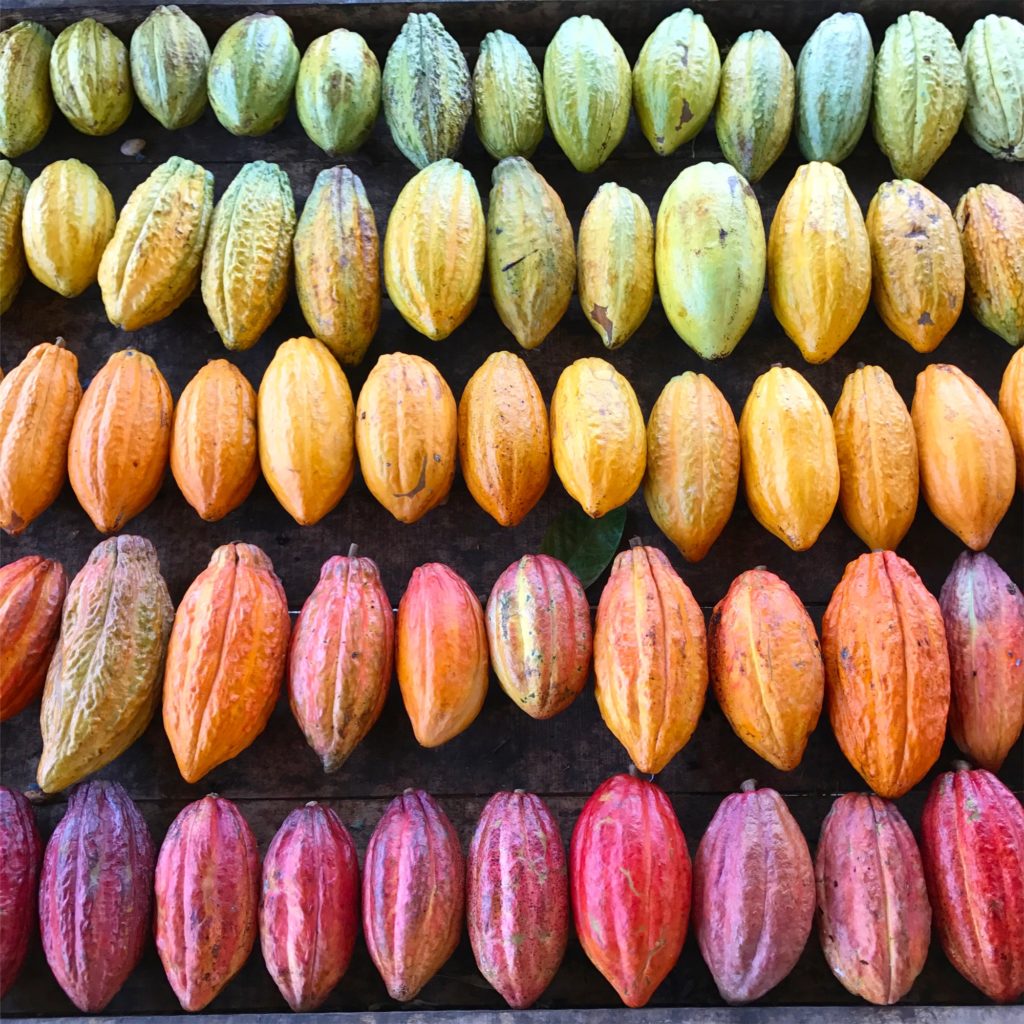
Izabal Agro Forest
Izabal Agro Forest (IAF) is a private company in operation since 2014 that provides advisory, project development, and property management services in climate-smart agroforestry, regenerative farm and forest systems, plantation forestry, and landscape restoration. Many projects combine these elements and seek to balance the generation of both natural and financial capital. Projects are developed to be financially viable, delivering a return targeted to each investor’s mandate. IAF’s geographic focus is Guatemala. Its partners have extensive experience throughout Central and South America and have worked with various institutional and other private investors.
IAF has collected dozens of cacao cultivars, which have been established in germplasm banks. Most commercial cultivars have been researched and recommended by prominent research institutions, including CATIE and FHIA. The company has a proprietary collection of genetics, primarily from Guatemala but with selections from such locales as Mexico, Venezuela, the Pacific Islands, and Costa Rica.
Website: https://izabalagroforest.com/
Contact: hola@izabalagroforest.com
Location: Rio Dulce, Izabal
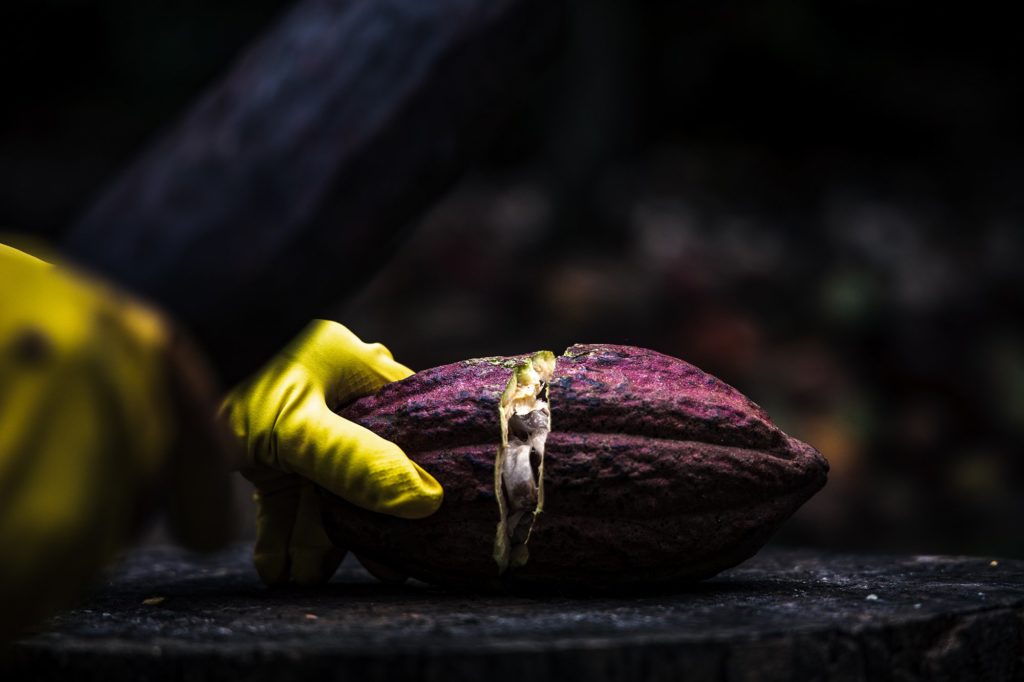
Kacaou Farms
Kacaou Farms started in 2017 as a commercial brand, but the cocoa plantation began in 2012 in Rio Dulce, Izabal, Guatemala. Kacaou Farms is in the heart of the Mayan civilization, alongside one of the most beautiful rivers in Guatemala, Rio Dulce. The farm is dedicated to producing fine cacao (Trinitario-Mayan Red) and aims to bring its essence again. It is ethically sourced, with good practices, and no chemical use directly on the plant. We are small cacao producers from Guatemala and a startup company about cacao-based products. Kacaou products are 100% natural, handcrafted (artisan), free from artificial additives, colors, and preservatives. We believe in health-conscious quality food, both for making chocolate and for other uses of cacao.
Awards
In 2017 we were awarded one of the 50 best beans from 166 samples worldwide for the Cocoa of Excellence. On October 30, we won one of the 18 International Cocoa Awards celebrated at the Salon du Chocolat, Paris.
Website: https://kacaou.com/
Location: Rio Dulce, Izabal
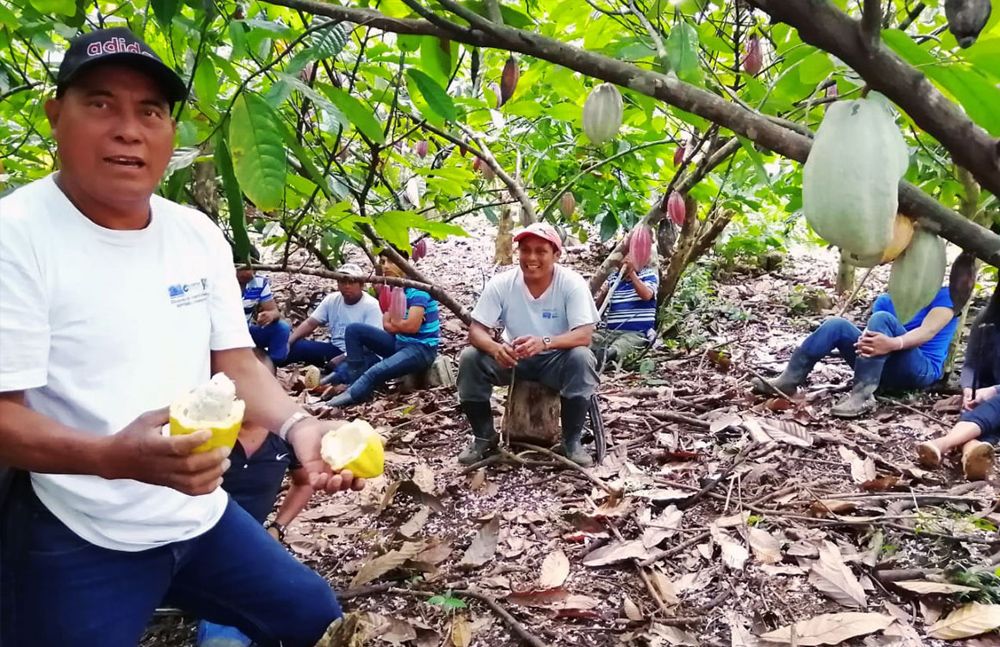
Propetén Foundation / Productos Agroforestales de Petén -PAPSA-
Productos Agroforestales de Petén -PAPSA- is a trading company established in 2020 by first-level community organizations in Petén. This company was created as a requirement of the community organizations to facilitate cacao trading in the region. Propetén Foundation, an NGO and non-profit, implementing several projects oriented to local development and biodiversity preservation, has led the cacao value chain development in Peten since 2008. Propetén’s role in the cacao value chain is to provide technical advice and training to farmers in topics covering cacao production up to post-harvest processing.
They support local community organizations by providing a permanent technical team that trains farmers in pest and disease control, pruning, shade management, harvesting, and fertilization using field school extension methods. Additionally, Propetén Foundation and its donors funded infrastructure for post-harvest processing (fermentation and drying) and storage. These community organizations also have a bean-to-bar chocolate processing facility implemented by the “Red de Mujeres Chocolateras” that contributes to women’s economic development.
PAPSA’s role is to facilitate small farmers’ cacao trading, promote business partnerships, establish trade contacts, and provide export logistics for cacao export to the US and Europe. The cacao beans supplied by PAPSA, considered Criollo and modern Criollo in some areas, are produced under agroforestry systems by small farmers in Southern Peten. These beans are characterized by their sweet, fruity, floral and, nuts flavor notes.
The long-term partnership in cacao production and processing between Propetén and the local community organization in Peten has won several national and international awards. In 2017, these organizations were recognized among the top 18 high-quality cacao beans producers worldwide by the Cocoa of Excellence Program in Paris, France. In 2020, a dark chocolate bar made with these cacao beans was Gold awarded by the Academy of Chocolate in the UK. In 2021, they also were selected by the Cocoa of Excellence Program in Guatemala, among the top fine cacao producer nationwide, confirming its long-term commitment to high quality. Additionally, in 2021, the Ministry of Economy in Guatemala recognized them with the “Sello Blanco 2021”, an award that recognizes small and medium-sized enterprises for their commitment to social responsibility and local economic development by producing high-quality products for export to international markets.
Website: https://www.propeten.org/
Contact: Rosa Irene Contreras (Executive Director) at rcontreras@propeten.org or +502 59806310
Location: Calle Central, Cuidad Flores, Petén
Southern Region
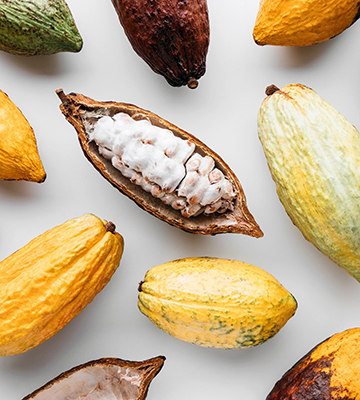
Asociación Nacional del Kakaw -ANAKAKAW-
ANAKAKAW is a Guatemalan organization founded in 2005 to rescue and preserve the local fine flavor cacao varieties. Our efforts focus on developing the cacao value chain to produce high-quality products to reach national and international markets. Our Heirloom cacao is a heritage passed by several small farmers generations. It is surrounded by Mayan archeology, culture, cultural relevance, and belonging, produced under agroforestry systems. We source cacao Criollo from organic certified small farmers, thus contributing to economic development in the Pacific Coast.
Our commercial brand “De Lo Natural Alimentos Sanos” is committed to providing healthy foods to our consumers, and our flagship product is “Cacao Nibs,” made from organic certified Criollo cacao beans.
Website: https://centrodelcacao.com/
Location: El Tumbador, San Marcos, Guatemala
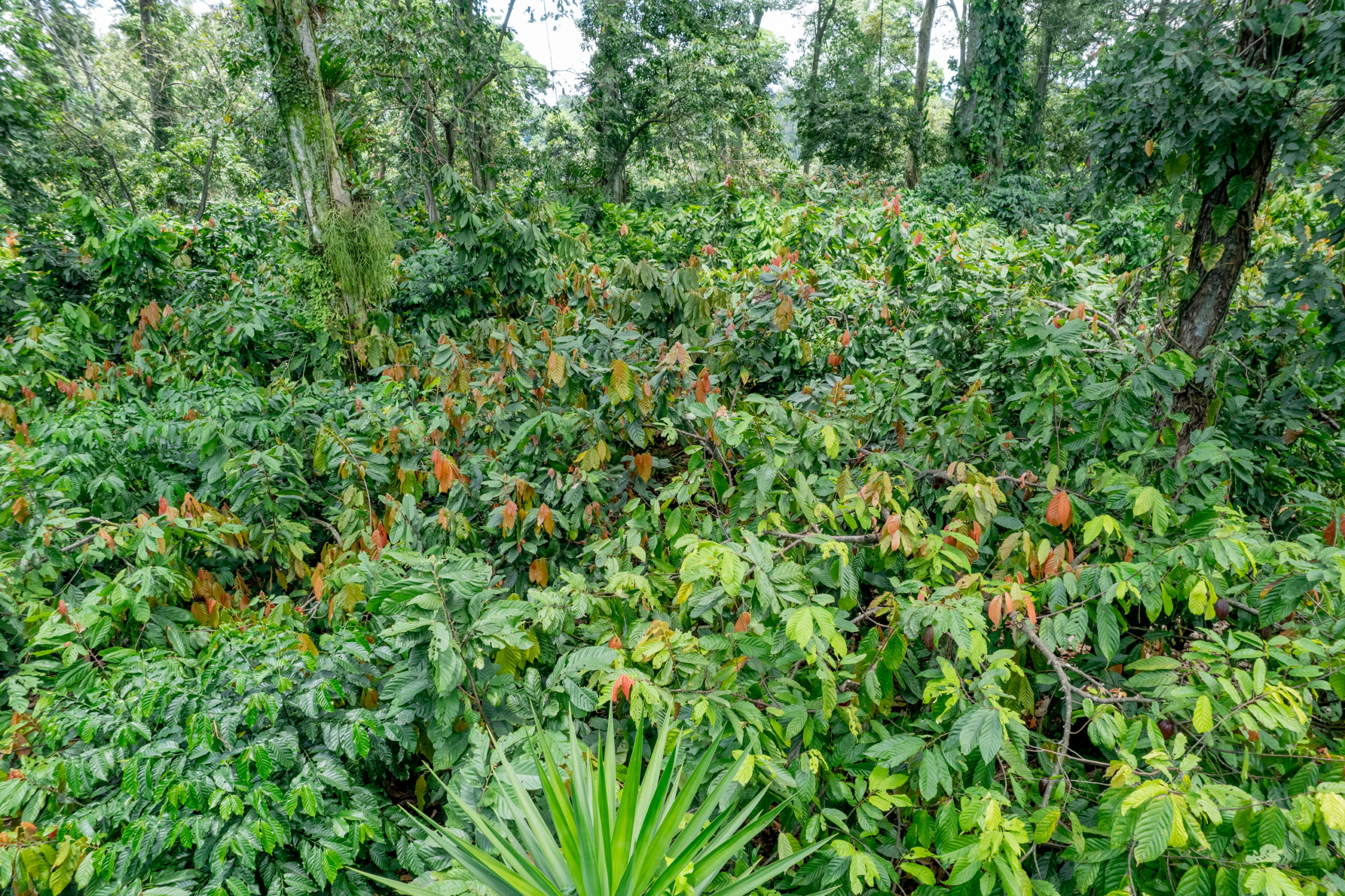
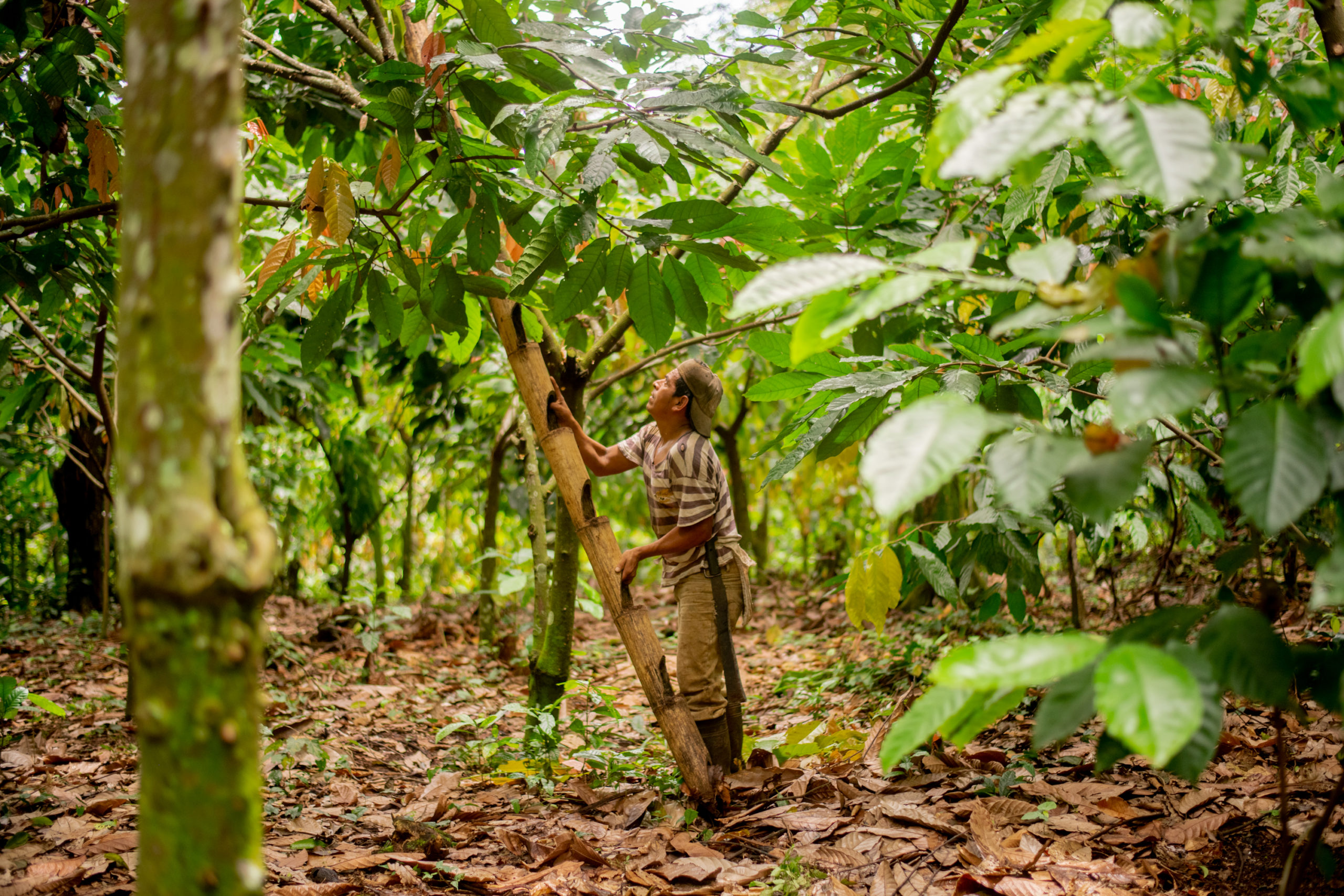
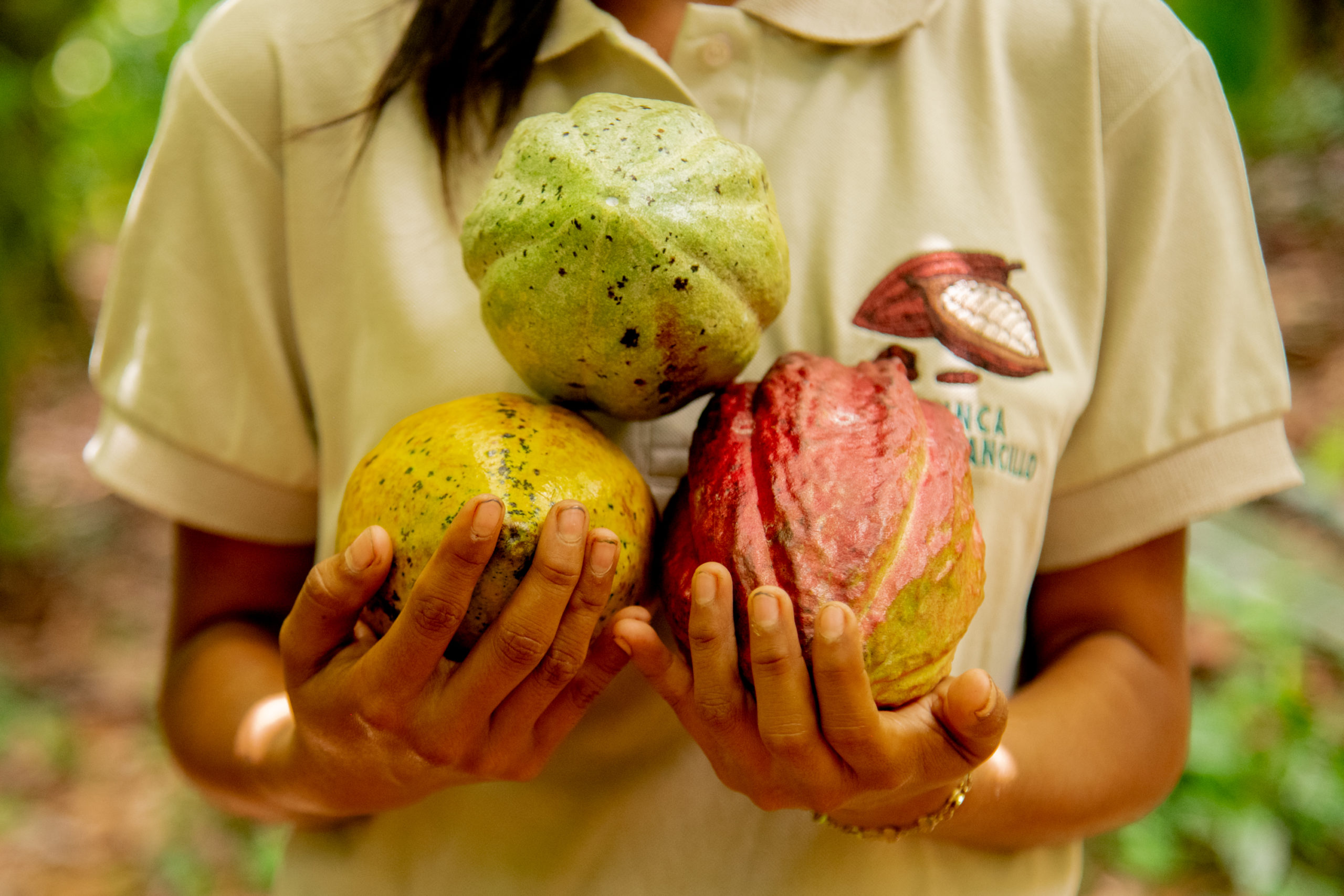
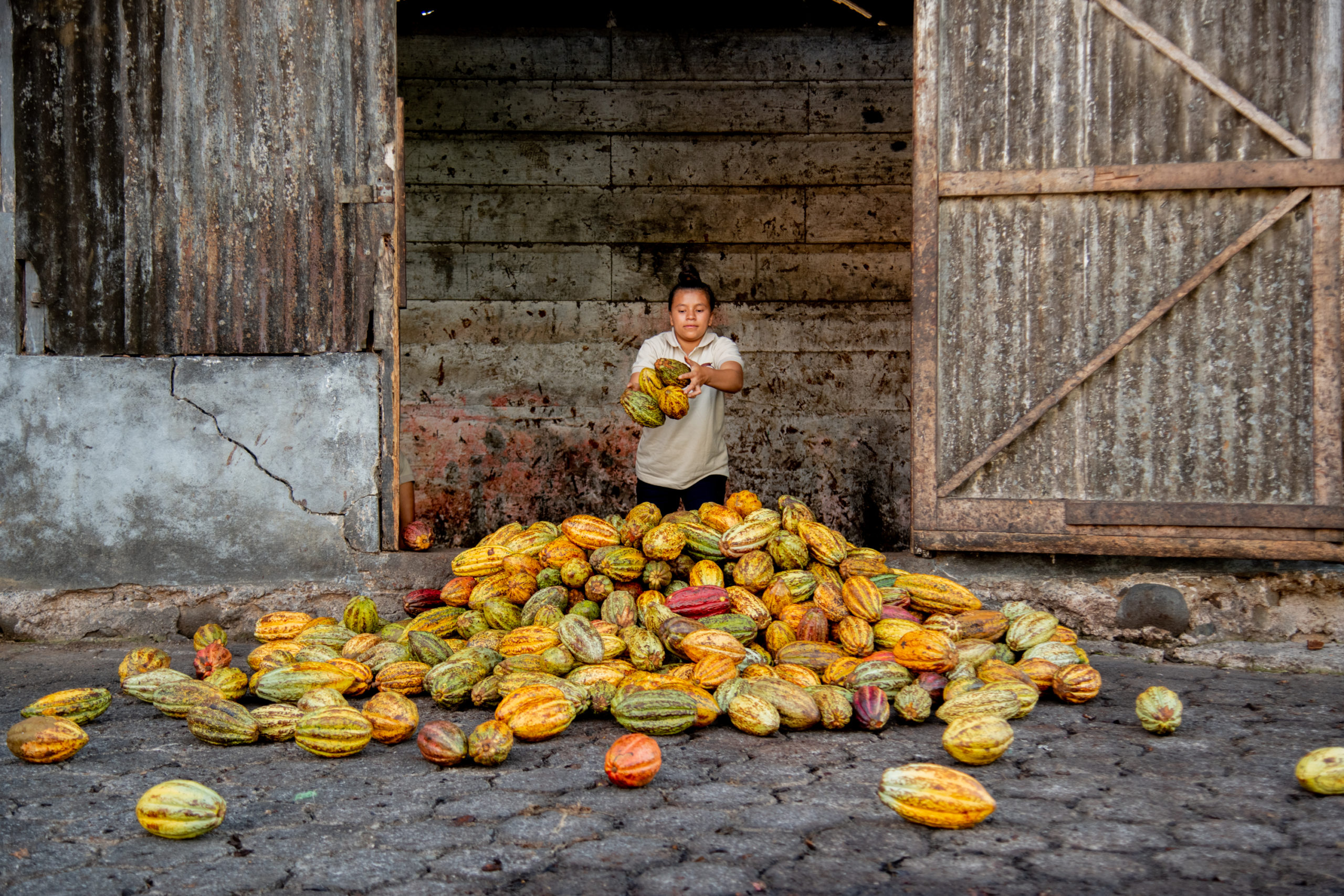
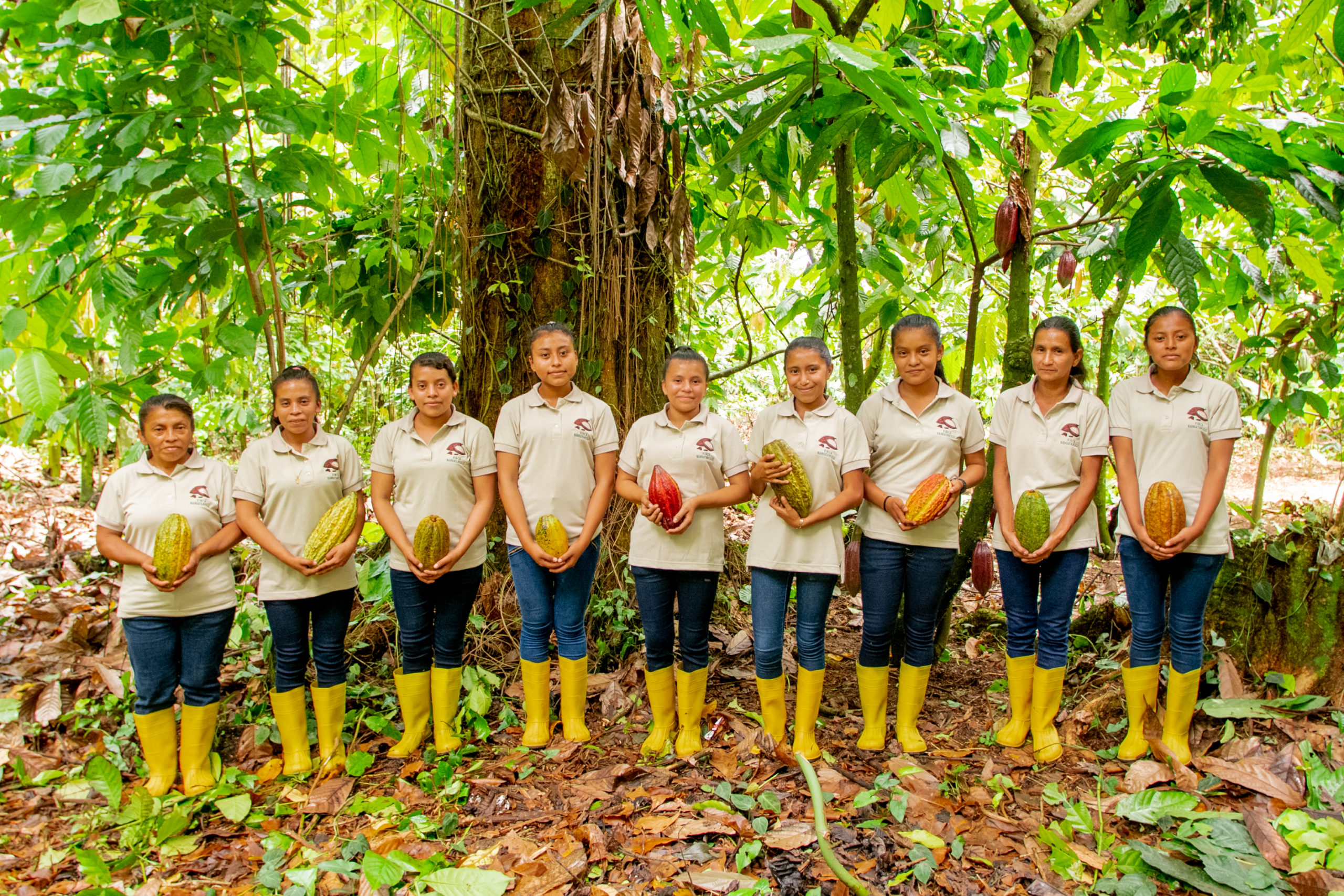
Finca Nahuatancillo
Finca Nahuatancillo was established in 1880 by earlier generations of the current family owners. It is a 540-hectares size with 1900 feet altitude, producing Arabica and Robusta coffee, macadamia nuts, and cacao. Nahuatancillo is in El Tumbador, San Marcos, at 280 kilometers from Guatemala City and 50 kilometers from Tapachula, Chiapas, Mexico. In 1977, the farm planted 72 hectares of cacao Trinitario, yielding 30 metric tons of dry cacao beans over the following years. In 2017, they planted 3 hectares with modern Criollo.
In 2017 and 2021, Finca Nahuatancillo was recognized as one of the best fine cacaos produced in Guatemala and selected to represent the country in the Cocoa of Excellence Program in Paris, France.
Contact: Melvin Morales (General Manager) at finasaguate@gmail.com or +502 5616-9675
Location: El Tumbador, San Marcos.
Guatemala Chocolate Producers
- Danta Chocolate
- Chocomuseo
- Fernandos Kaffee
- Chocolateria Zurich
- Chocolate doña pancha
- Chocolate Aroma de Luna Quetzalteca (Aracely Chojolán)
- Agroindustrias PICSA
- Chocolates Granada
- Chocolá
- Chocolate Sero
- Chocolate Doña Mari
- Ixcacao
- Diego’s Chocolate
- Ch’och’el Chocolate
- Ek Chuah
- Xoco Gourmet
Guatemala Ceremonial cacao companies
Other contacts in the country
Differentiated Products Commission – AGEXPORT–
The Differentiated Products Commission is formed by companies, cooperatives, and associations that produce, condition, and export products with unique characteristics of quality and origin. Their catalog includes spices, honey, cocoa, chocolate, cobanero pepper, macadamia, sesame, cinnamon, and organic products, among others.
Website: https://export.com.gt/publico/comite-de-productos-diferenciados
Contact: Ismael Herrera at ismael.herrera@agexport.org.gt
Location: 15 avenida 14-72 zona 13, Guatemala City
FUNDASISTEMAS
In Fundasistemas, we work to improve the living conditions of the people who make up the micro, small, medium rural, and urban enterprises. We have over 11 years of experience generating an impact and driving profound behavioral changes in people.
Website: http://fundasistemas.org/index/
Contact: info@fundasistemas.org or +502 2326-3990
Location: 12 calle 2-25 Zona 10, Guatemala City
BEPS International
BEPS International has more than 10 years of experience in agriculture, food processing, and rural development in Guatemala and Central America. We contribute to economic development in rural areas by providing scientific solutions to cacao post-harvest processing and chocolate-making challenges. Additionally, we advise on cacao export logistics to small and medium-sized businesses and serve as bean-to-bar chocolate equipment importers in Guatemala. BEPS International is an active member in the Cacao Value Chain in the North Chapter and at the National level.
Website: https://bepsisa.com/
Contact: Percy Manuel Ac-Pangan (Central America Office) at info@bepsisa.com or +502 4595 1083
Location: 12 avenida 12-80 Zona 12, Coban, Alta Verapaz
International Chocolate Companies Working with Guatemalan cacao
Worldwide
- Duffy’s Chocolate Humberston, UK
- Dormuse Chocolates Manchester, UK
- Zotter Chocolate Riegersburg, AT
- Lucocoa London, UK
- Sweet Minou Lincoln, NE
- Beanu Cacao Birmingham, UK
- Glennmade Craft Chocolate The Bronk, NY
- McGuire Chocolate New Brunswick, CA
- Fjak Sjokolade Eidfjord, NO
- York Cocoa York, UK
- Millésime Chocolat Seraing, BE
- Kakau Worship Athens, GR
- Sirene Chocolate
- Bar Bers Artisan Chocolate and Tea Devon, UK
- Beskid Chocolate Zywiec, PL
- Land Chocolate London, UK
- Ethicoco Titchfield, UK
- Fossa Chocolate Singapur
- Standout Chocolate Kållered SWE
- The Tartan Blanket Co. Edinburg, SC
- Hogarth Chocolate Makers North Island, NZ
- Utopick Chocolate Makers Valencia, ES
United States and Canada
- Boho Chocolate New England
- Bixby Chocolate Rockland, ME
- Chocotenango Washington, DC
- Dandelion Chocolate San Francisco, CA
- Dick Taylor Craft Chocolate Eureka, CA
- Goodnow Farms Sudbury, MA
- French Broad Chocolates Asheville, NC
- Fresco Artisan Chocolate Lynden, WA
- Cru Chocolate Sacramento, CA
- Cultura Craft Chocolate Denver, CO
- Parré Chocolat Fair Lawn, NJ
- Palette de Bine Montréal, CA
- Michael Cluizel
- Soul Chocolate Toronto, CA
- The Cocoa Forge Port Townsend, WA
- Zak’s Chocolate Scottsdale, AZ
- Nuance Chocolate Fort Collins, CO
- Vesta Chocolate Montclair, NJ
Learn More About Guatemala’s Cacao
Videos
- “El Chocolate en la cultura guatemalteca” by Universidad Francisco Marroquín
- “La cosecha gloriosa: el cacao y el sacrificio humano en Mesoamérica” by Universidad Francisco Marroquín
- “Medios de Vida” by UICN
- “Regiones productoras de cacao fino en el Norte de Guatemala” by UICN
- “El cacao es mi negocio” by PNUD
- “Producción de cacao guatemalteco” by TVAgroMedia
- “Cacao guatemalteco atractivo para el mercado internacional” by AGEXPORT
- “Watch the Ancient Art of Chocolate-Making” by National Geographic
- “Cacao: Food of the Gods – a film about the origin of cacao ceremonies” by Cacao Laboratory
Selected books, government, and NGO reports (in Spanish)
- “Kakaw: el chocolate en la cultura guatemalteca” (printed book) by Cameron McNeil et al., 2005. Universidad Francisco Marroquín
- “Plan estratégico de la Agrocadena de Cacao de Guatemala” by Ministerio de Agricultura de Guatemala-MAGA
- “El Sistema de mercado de cacao en Guatemala, oportunidades para apoyar la renovación y rehabilitación” by Alianza Bioversity International and CIAT
- “Situación actual de la cadena de cacao de Guatemala” by Rikolto
AUTHOR: Marlon Ac-Pangan, the author of this article, is a post-doctoral associate at the Department of Food Science and Technology (FST) at Virginia tech, working in the Sensory Evaluation, Enology and Fermentation Labs. His primary work includes understanding the influence of cultivar and fermentation strategies on cider chemistry, flavor and consumer valuation. Additionally, he is contributing to expanding the cocoa fermentation and chocolate sensory evaluation research at FST. Before joining Virginia Tech, Marlon earned his Ph.D. in food science and human nutrition from the University of Illinois at Urbana-Champaign.
